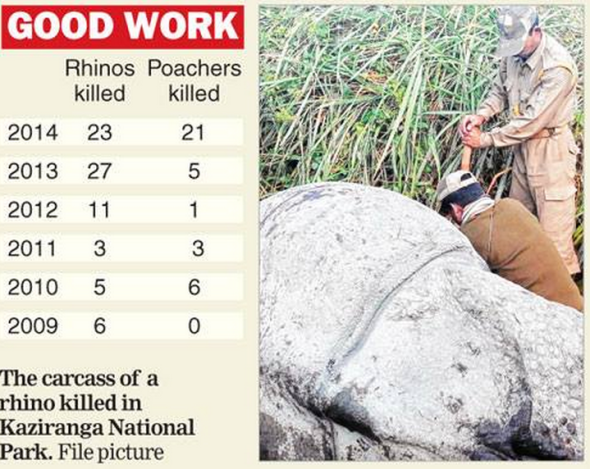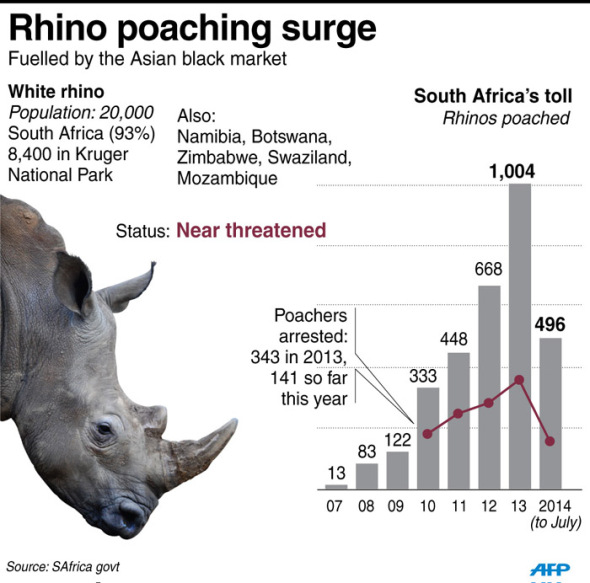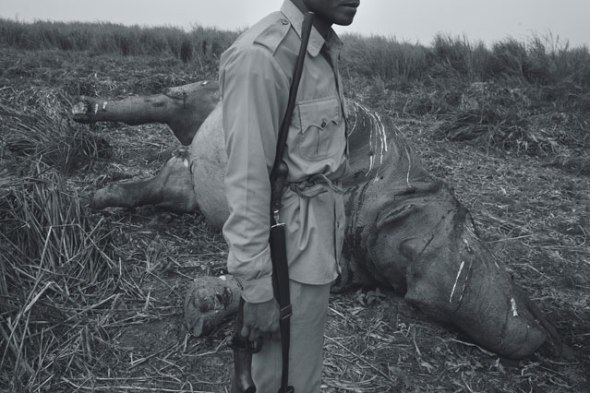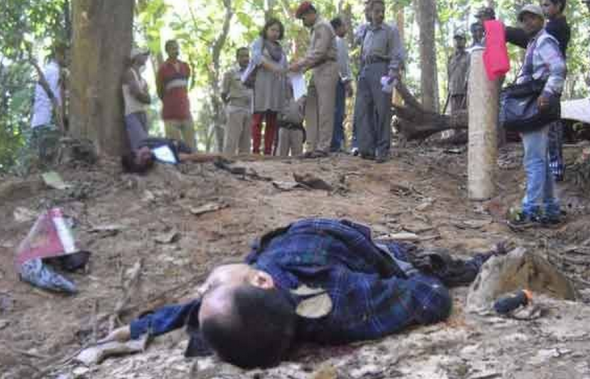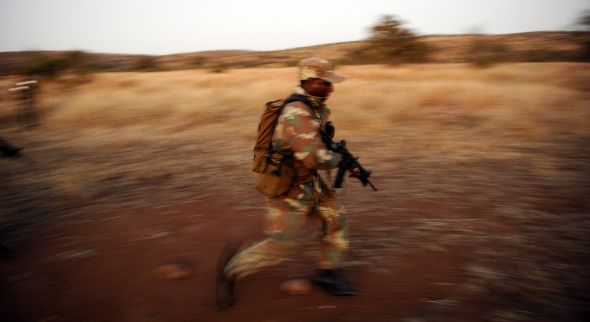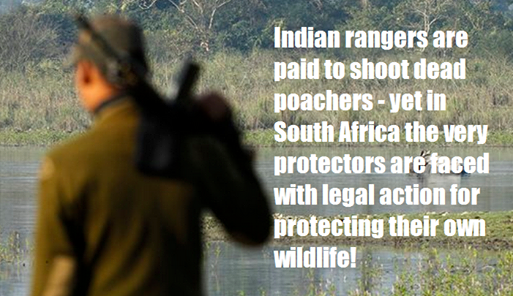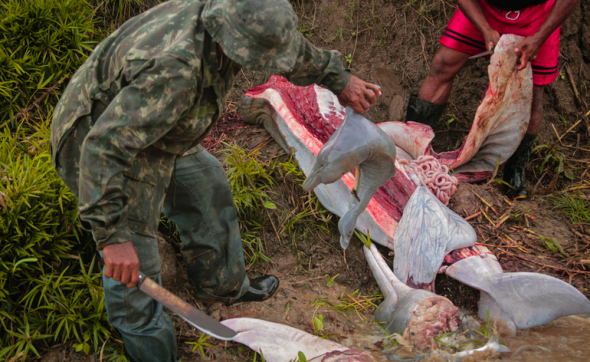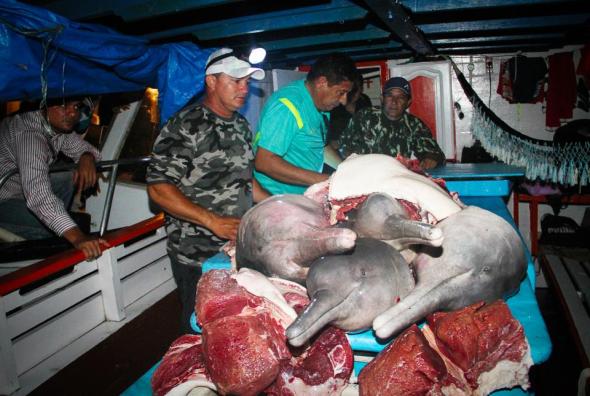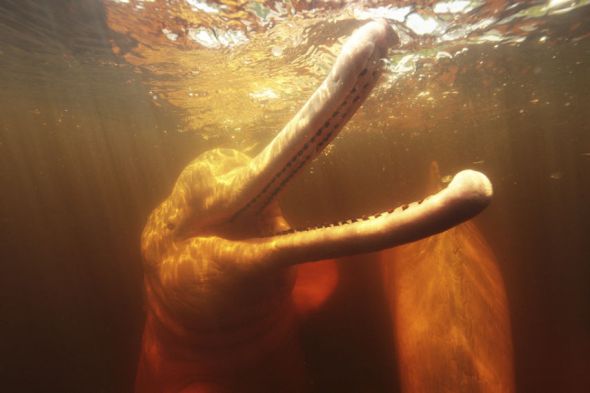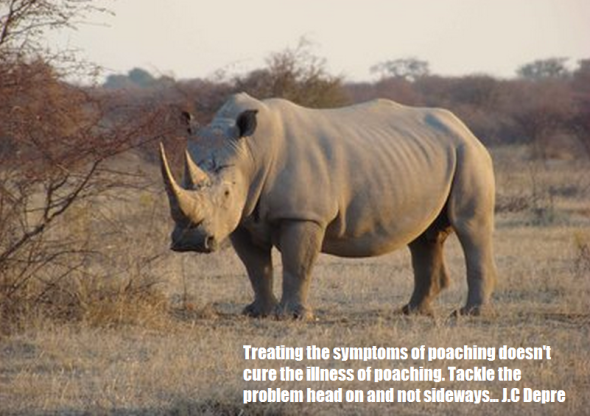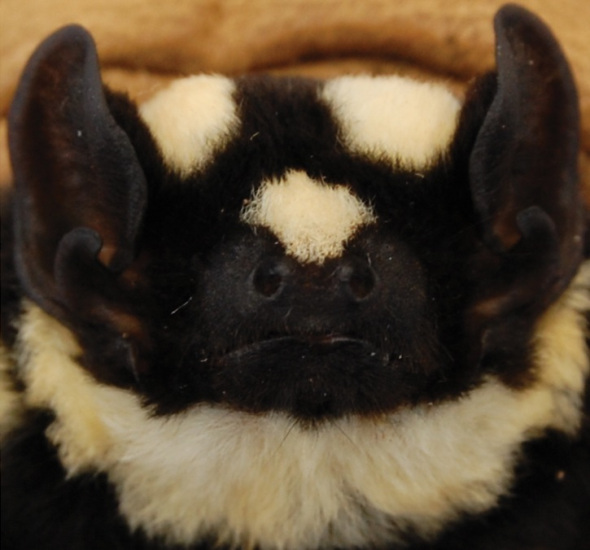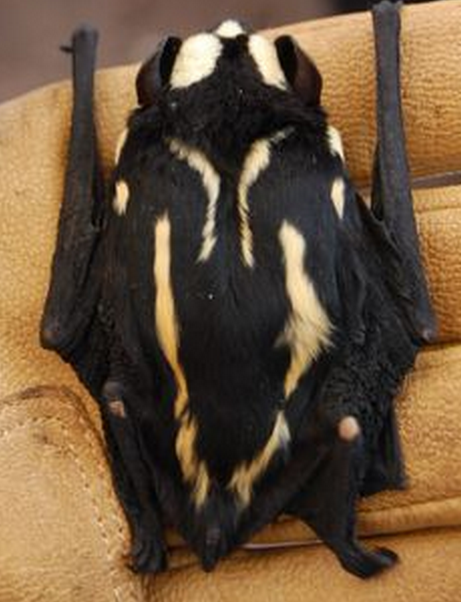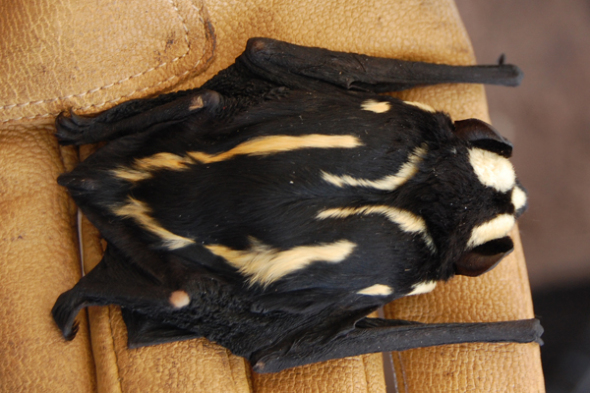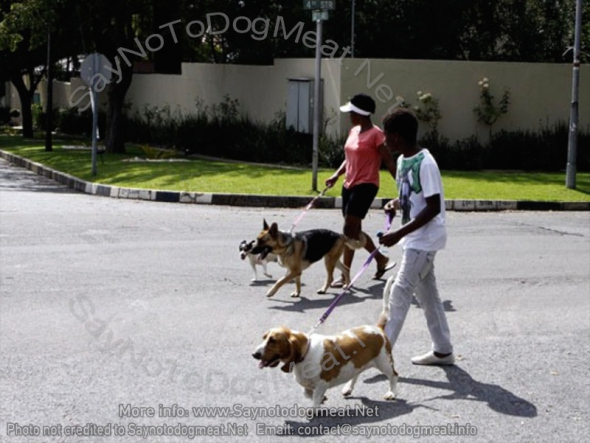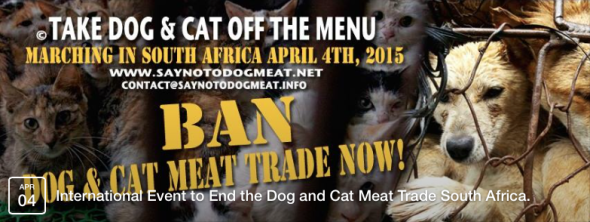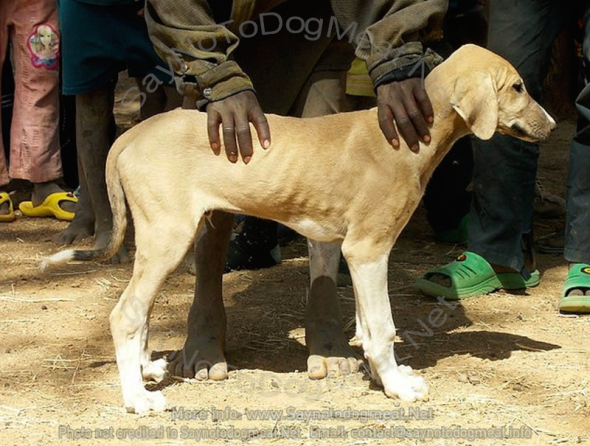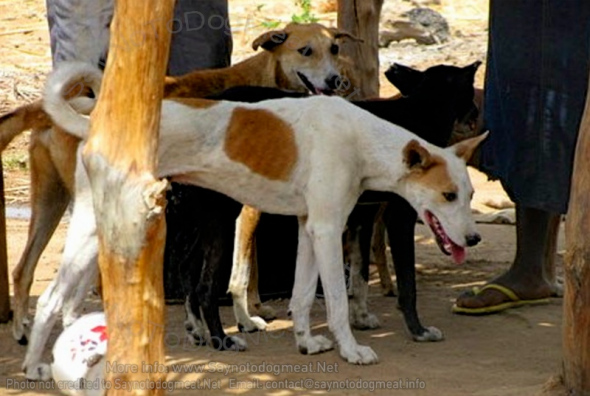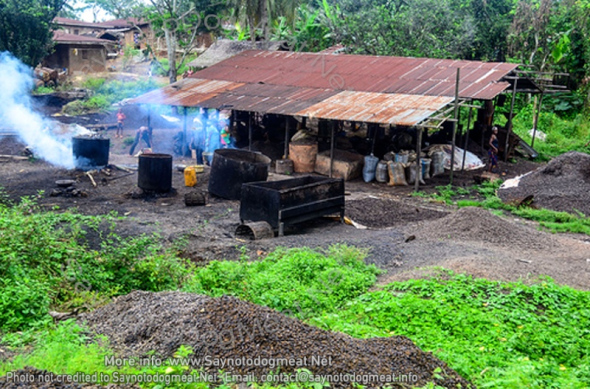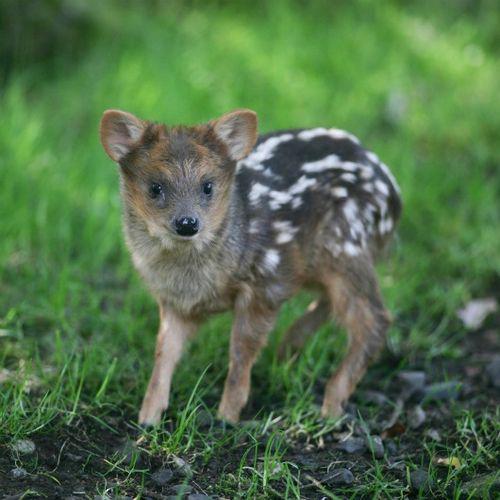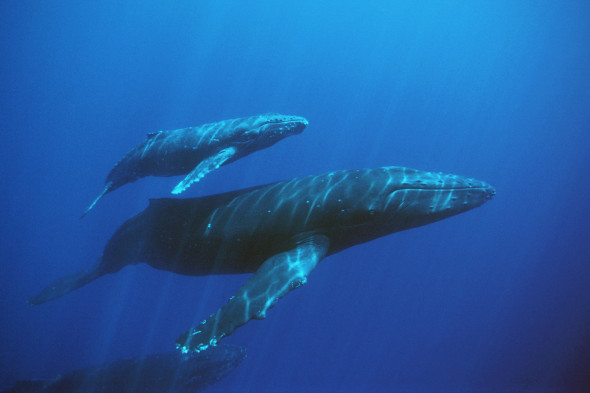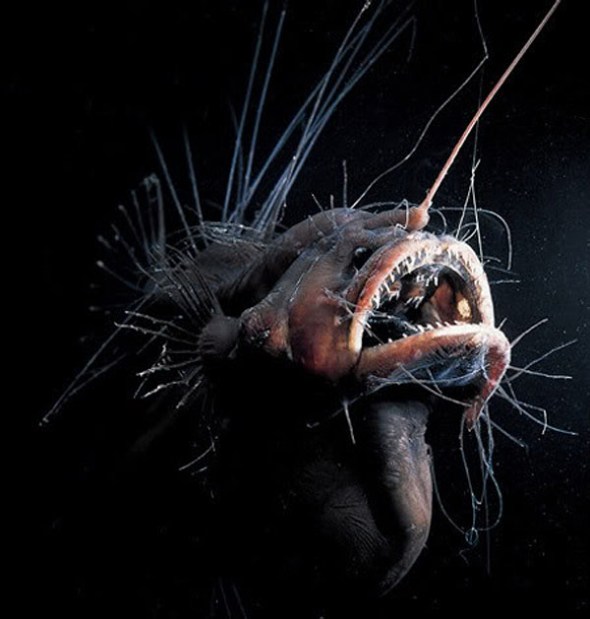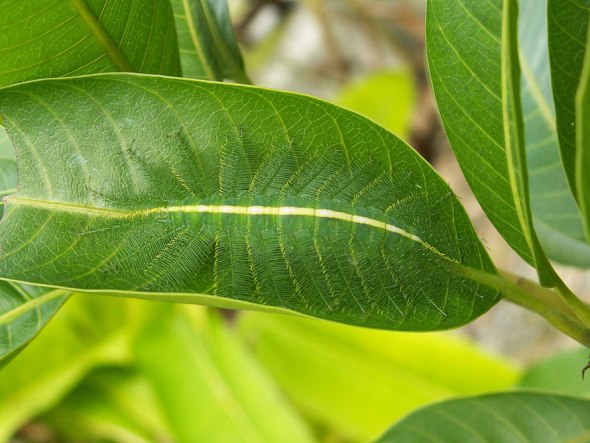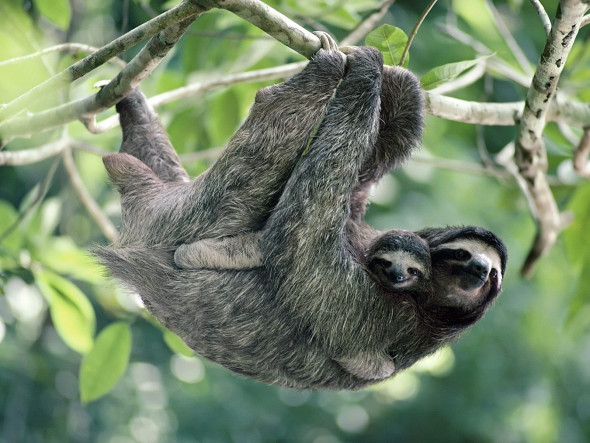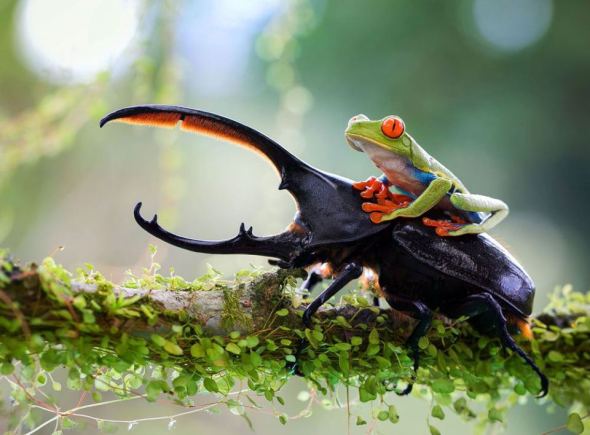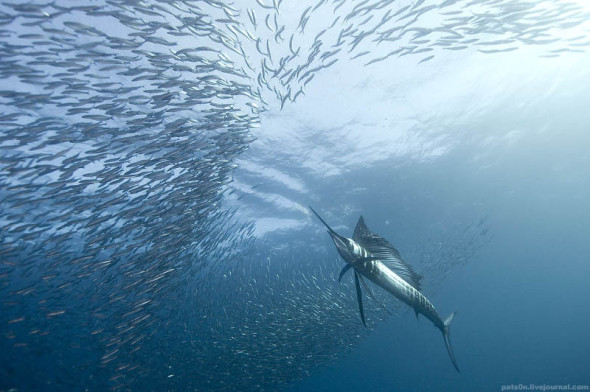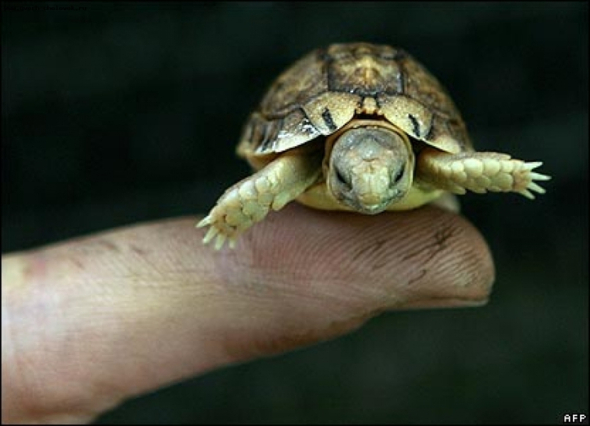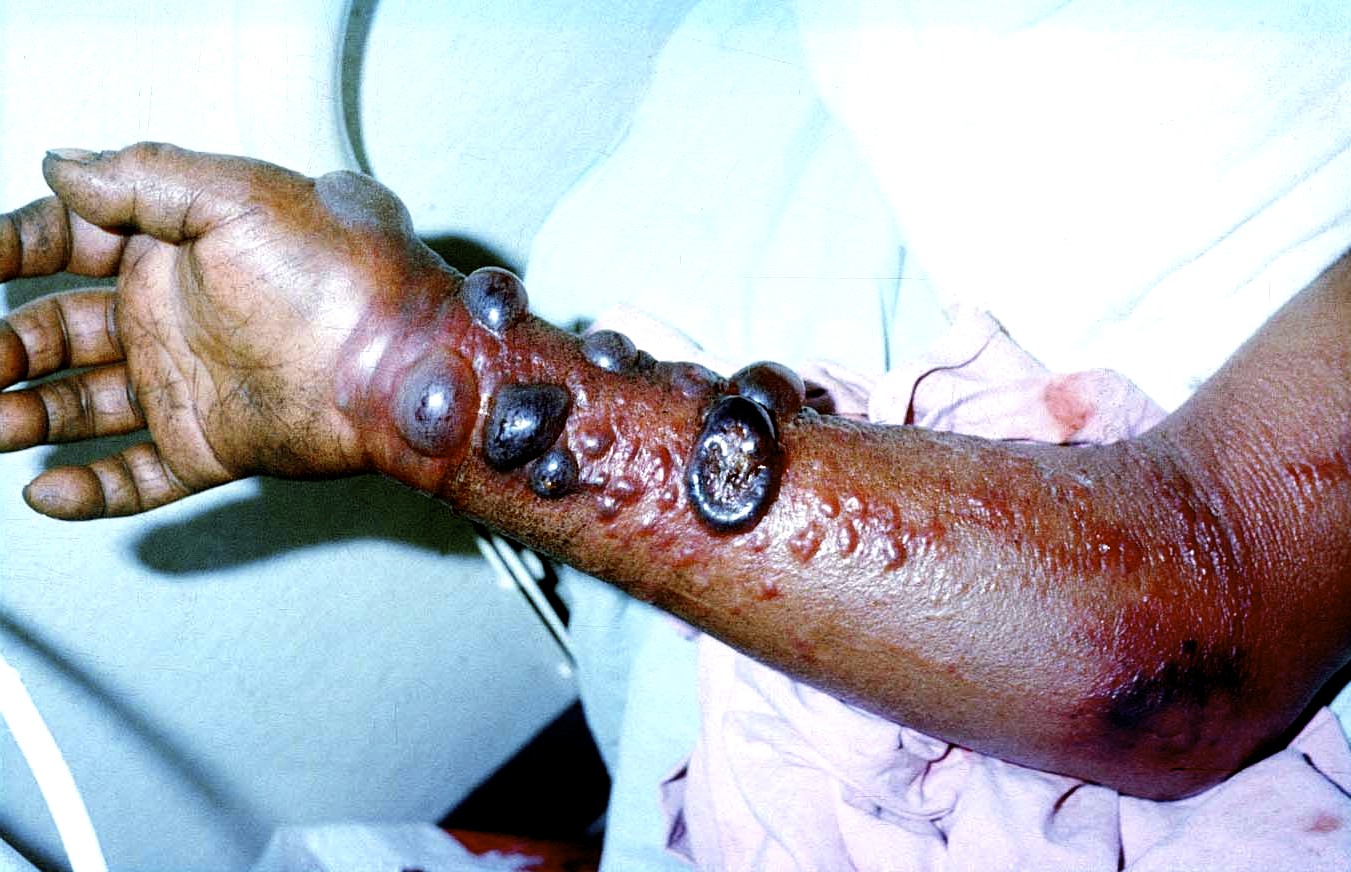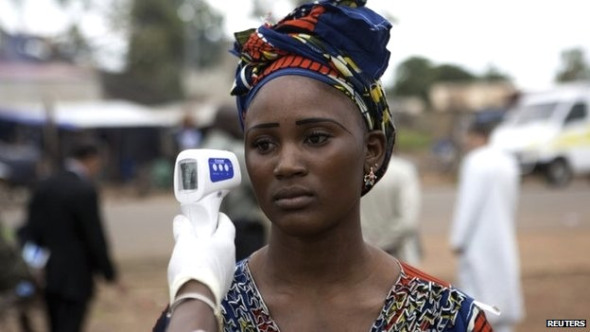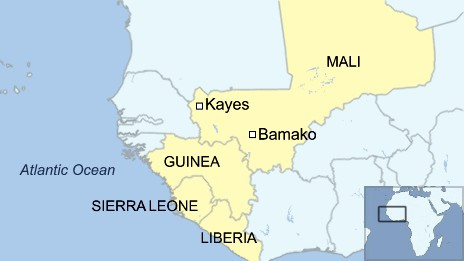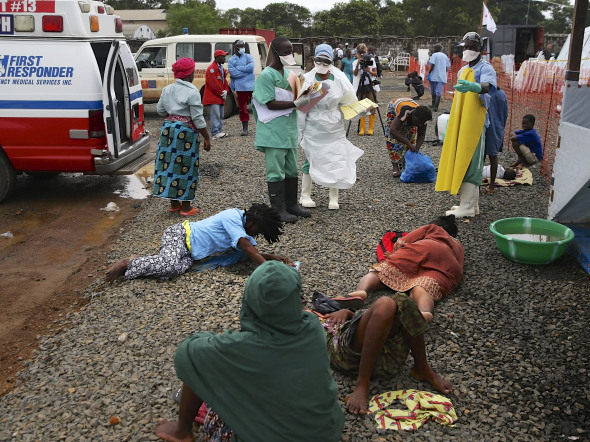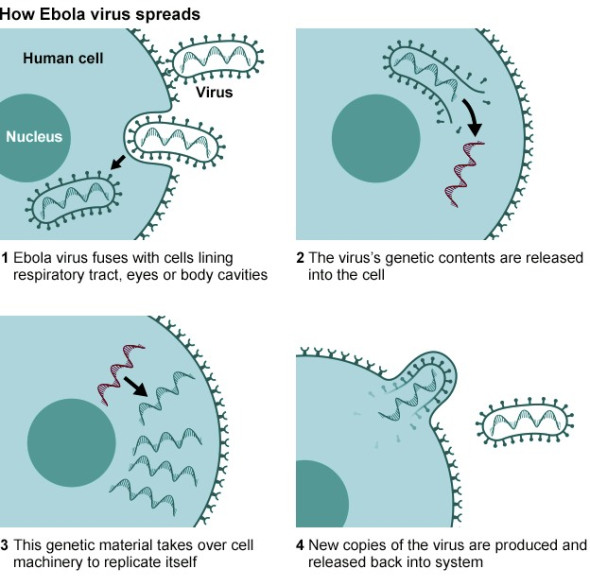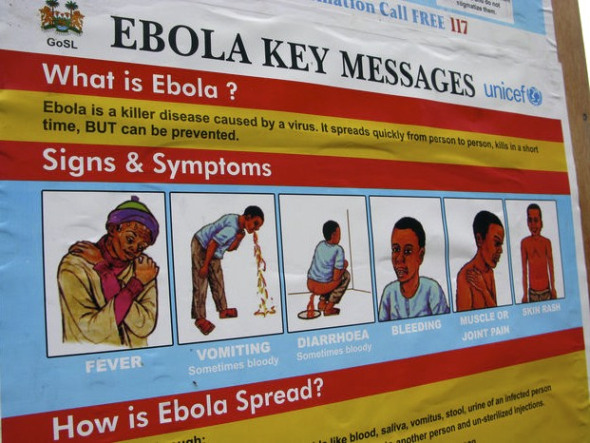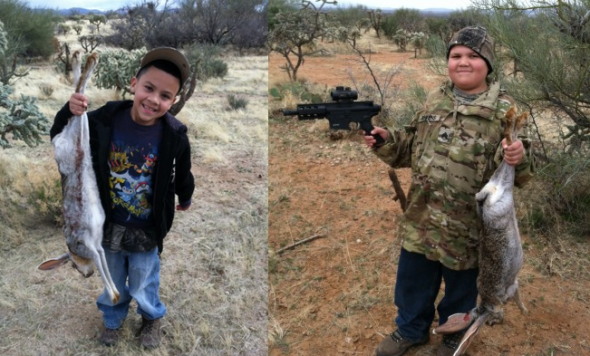Licence to Kill - Welcome to the Future of Conservation.
Rhino and elephant poaching on the African continent has again raged out of control this year, and as we near the end of 2014 statistical data shows that near to 1200 rhinoceros have been poached for fake medicine and thousands more elephants killed for meat and their ivory. Its expected by the end of 2014 we will have lost some 1400 rhino. Data models have also shown that by the end of 2015 we look set to loose a staggering 2,009 rhinos with thousands more elephants too.
The poaching pandemic within South Africa custodian to the worlds largest populations of Rhinoceros isn’t decreasing, nor are any forms of anti poaching actively working to at least stem the poaching rate. From 2010 we lost 333 rhinoceros of which some 165 people were arrested. 2011 poaching and arrest statistics increased again that saw some 448 rhino butchered and 282 poachers arrested. From 2012 poaching statistics shot up yet again seeing some 668 rhinoceros killed and 297 people suspected or known to have poached arrested. 2013 over 1004 rhino were slaughtered of which a further 298 people suspected of poaching were arrested.
Statistics for 2014 to date place arrest rates at some 344 with some 1100 rhinoceros bludgeoned to death to provide the Asian medicine market with fake medicinal cures and to show wealth among the rich within the countries of Viet Nam, Laos, China and Thailand.
India has had its fair share of poaching too although poachers do play Russian roulette when they wish to poach rhinos, tigers or elephants within the Indian national parks. Statistics show some 37 one horned rhinoceros poached since the start of the year which is a little over last years poaching records. Arrest rates are up that see some 45 people arrested. Deaths of poachers has increased from last years statistics that was 5 poachers killed compared to this years kill rate that stands at 27 poachers killed within the national parks of India.
Please note the Rhino poaching stats for 2014 are incorrect - to date over 30 Rhinos have since been poached.
While arrest rates are increasing within South Africa [see pic below] with regards to rhino poaching very few poachers are actually brought before the courts with many given bail just to commit the same offence again or flee back over the border from which they remain untouchable just to re-offend again.
Back in early December 2014 International Animal Rescue Foundation Africa and India launched a public debate focusing on [Shoot to Kill] - a method of wildlife preservation now active in the majority of wildlife parks in India that sends a clear and precise message to poachers - yet within South Africa is barely practiced as rangers and farm security either face red tape court and legal action or haven’t even the weapons to shoot to defend or kill poachers. Red tape or legal action is not seen within the states of India where a one shot to kill poachers has been authorized.
Kaziranga National Park hosts plenty of tigers being the worlds highest density and fleets of endangered one-horned rhinos. (More than two-thirds of the remaining population.) And, since 2010 a take-no-prisoners anti-poaching policy that allows rangers to shoot on sight. Welcome to the future of conservation.
Indian wildlife poacher Naren Pegu briefly became famous back in 2010 with regards to the Indian shoot to kill policy. Poacher Naren Pegu was shot dead on the morning of December 13th 2010 after anti poachers could take no more. Naren Pegu had decimated many rhino and tiger populations making thousands from animals parts and providing an illicit trade to South East Asia.
Time to Get Tough on Poaching;
The fall of India’s most notorious poacher.
Pegu was a member of the Mishing tribe, one of Assam’s many indigenous groups that, like their equivalents everywhere, have lost land and livelihoods. Mishing villages line the park boundary, their inhabitants pressed against it like kids at a candy-store window. If you can’t pay $50 for a jeep safari, you can’t get inside. Growing up here, Pegu learned to sneak past the border; he knew the park like his own backyard. He’d come and go undetected by the forest guards—India’s version of wildlife rangers. Poaching ran in Pegu’s family; his father was a poacher before him. In all due respects Pegu was “allegedly” poaching to provide a stable income for his family of which poachers within Africa of which some opportunistic poachers are merely doing the same. If countries such as Viet Nam, Laos and China were not using tiger, rhino and other animal parts for trade its most likely that Pegu and his family members would either have to resort to other violent crime to feed and provide income to family members or die from extreme poverty.
Most Mishing involved in the trade are content to serve as illegal guides for the bigger regional guns—sharpshooters and brokers from Nagaland—whom they lead in and out of the vast park, taking a small cut. But Naren Pegu was enterprising. He taught himself the rules of the trade, cutting deals in seedy hotels. Learned where to get black-market .303 rifles from the separatists who control the Nagaland hills. He thought big. Typically, poachers blow any money they come into, but not Pegu: he’d saved enough to invest in three vehicles, a big house, even a plot of land, where he was starting his own tea garden in some sort of psychological stab at legitimacy. While Pegu was bringing down more than $20,000 per year through poaching, his Mishing relations scrabbled to earn $200 a year in the rice paddies.
Pegu had every right to feel cocky as he and an accomplice slipped into Kaziranga on the evening of December 12, waiting out the night munching on rotis and precooked rice; a fire would have given them away. At dawn, rhinos scatter across Kaziranga to feed on the rich grasslands, and Pegu was ready. He came upon a mother rhino feeding with her calf. Got out his rifle. Shooting a rhino is like shooting a barn: when you take aim, they stop and stare, deciding whether to charge. Pegu shot the mother dead, hacked off her horn, and left the baby standing there. The park border, his village, and a payday in Nagaland were not far away.
Pegu should have been home free. He knew the landscape, and Kaziranga employs only about 500 forest guards to cover more than 300 square miles of tall grass and jungle—on foot. What were their chances of finding him? Yet, unbeknownst to Pegu, before he even fired his shot three forest guards had entered the area, searching for him. As soon as he fired, they closed on the spot. Unlike most guards in most parks in India, they were armed. And they had license to kill.
Pegu saw the guards first and opened fire. Missed. The guards took cover. As the shooting continued, one guard calmly raised his antique .303 Lee Enfield rifle to his shoulder, lined up Pegu in his sights, and blew his head off.
Pegu’s accomplice was shot in the hip by another guard. An hour later, he, too, had died “from his injuries,” according to the park’s report. Pictures from that day show the two men lying on the forest floor. The accomplice has dried black blood around his eyes, nose, and ears. Pegu’s head is split open like a watermelon.
The photography we have on Pegu and his accomplice is to graphic to include within this article however one can Google it by searching in the Punjabi language.
Licence to Kill - Smack in the Face to South Africans…
Indian rangers and forestry guards are paid an extra allowance should they locate and shoot dead poachers. While some may not believe this is actually helping to deter poachers - it actually is. India has the lowest rhino poaching rate compared with Africa of which to date over 1100 South African rhinos have been poached dead this year alone [2014]. 91.74% of voters agreed this year that a shoot to kill policy should be drawn up within South Africa. 6.46% of people stated a shoot to kill policy should not be given to rangers while 1.73% stated they were unsure. Either way this is desperate times and desperate times calls for some serious defensive measures. No mater what legislation the South African government is bringing in - its not working, This year alone as explained over one thousand rhinos have been bludgeoned to death. Something has to give and now we know poachers are feeling somewhat afraid to enter Indian National Parks the same sense of fear must apply to African poachers that wish to rid Africa of rhinos and other large fauna.
India is quite a poor country however they take wildlife crime as serious. Back in 2012 In addition, the government in Maharashtra reserved a fund of 5 million rupees ($90,000), to be used to reward people who can give information about alleged poachers. This year alone within rhino and tiger reserves alone we have seen an increase of poachers being shot dead and government handing out cash rewards. We must also reiterate that India has stated no legal action will be brought against those whom kill poachers. So why the same practice is not being adopted within South Africa is quite baffling. Are certain government ministers in on the poaching?
Indian forestry teams mostly now print on how they have shot dead poachers - rather than arrest them. Back in November 2014 yet another shoot out entailed the seventh for that month that left two rhino poachers dead and yet another message sent to the poaching community that wildlife crime will not be tolerated. Sadly since November to December we’ve lost a further seven rhinos however a four poachers out of them seven incidents were shot dead.
The two poachers were killed in an encounter with forest guards [picture below] in the Kaziranga National Park, famed for its one-horned rhinoceros. Acting on a tip-off, forest guards spotted the duo in a forest area between Diffloo and Borbhag camp in Burapahar range in Nagaon district and an encounter ensued in which the poachers were killed, a senior forest official said. The forest guards also recovered a .303 rifle, eight live cartridges, seven empty cartridges, some foodstuff and a mobile handset. The slain poachers have since been identified and their bodies have been sent for postmortem. A total of 14 poachers have been killed this year in Kaziranga National Park.
Poachers had arrived into the park in search of the endangered one horned Rhinoceros.
While some may agree hunting the poachers is extreme, its unfortunately the only [extreme] method of preserving our wildlife. Human Rights Organisations have yet to really speak out on the issue however are monitoring the increasing death rate of poachers within India. Their argument is poachers are trying to support their families financially.
Tiger and rhino populations within India are at their lowest though and while still extant their presence brings in revenue from tourism which helps to secure parks, pay wages, and decrease poverty within areas that border the main rhino and tiger parks. So in all the government is trying its hardest not only to protect its wildlife but also impoverished communities. Taking Indian wildlife poacher Naren Pegu case to hand too - while some journalists have stated he was only poaching to secure his families welfare, the vast majority of money was being used to fund his lavish lifestyle. While Naren Pegu was funding his own way of life, meanwhile on the border of Kruger National Park, South Africa “poachers that derive from poverty stricken Mozambique” are living the life of Riley. Poaching African rhino and living off the funding that is generated from the sales of the cut down horn. It truly is disgusting and a complete smack in the face to all Africans.
In Western Mozambique a now not so tiny nor impoverished village named as Kabok is now known as Mozambique’s millionaires rhino row. Poverty stricken individuals that are [untouchable] have for the past several years been wandering over the non-secure South African-Mozambique border taking down rhinoceros left right and center. While many face arrest and in some rare cases have been short dead [when a shoot out occurs] the village is growing and so too is its greed for Kruger’s Rhino horn and the wealth such horn trade brings in. Mansions and new vehicles can clearly be seen along the border to the disgust of anti poaching units and rangers alike.
In neighboring South Africa, these mansions would be called matchboxes. Most are flat-roofed, single-storeyed structures. Some look similar to RDP houses [public housing]. But what separates these homes from the usual reed houses in Kabok is that they are made from brick.
This part of Mozambique is dirt poor and the remnants of the civil war scar the landscape and the psyche of the people. War amputees wander the dirt roads. The new Kabok has been built on the horns of the hundreds of rhinos slaughtered just kilometres away in Kruger National Park. It is not alone – there are other towns spread along the border that lines Kruger National Park. They are the staging posts for rhino poachers.
There was a time when the bordering Corumane Dam supplied the community with its main source of income – fishing. Now, under the silvery full moon, fishermen ferry poachers across the lake, rowing them up the Sabie River and dropping them close to the Kruger fence. In South Africa Kabok has long had the reputation of being a haven for robbers and hijackers who take refuge across the border. Rhino economics filters through the town, the anti-poaching officer explains. Everyone gets a piece of the pie, builders are paid to construct those houses. Spaza shops have sprung up, some built with rhino money. The funeral industry, it appears, gets its cut too. Mozambique has in the past year acknowledged rhino poaching as being a crime and is actively helping to reduce communities along the border of the Kruger National Park. Sadly while the Mozambique government have acknowledged rhino poaching its still seen as a misdemeanor offence rather than a punishable offence. In all this is a smack in the face to all South Africans and our wildlife too.
Rules of Engagement - African Rangers can Face Legal Action;
Member of the SANDF Anti Poaching Unit patrolling the Kruger National Park
While the Indian Government has actively authorized in tiger and rhino reserves a shoot to kill policy of which forest guards are immune from legal action, in South Africa the rules of engagement are somewhat more cloudy of which there have been few cases where rangers and Anti Poaching Operatives have faced the wrath of their own government taking legal action against them for protecting their own wildlife. Animal rights activists must also remember when screaming and shouting at conservation units to shoot poachers - there are rules that must be obeyed at all times. These very rules are what International Animal Rescue Foundation Africa are now going to challenge in the wake of last months rhino poaching statistics and intelligence that has pinpointed South Africa as being the next country to be hit hard by elephant poachers. Activists must also remember that the vast majority of South African Anti Poaching Units are just that and not members of SANDF - South African National Defense Force that have the capability and authorization to take a shot at poachers and are 99.9% of the time armed while many Anti Poaching Units that consist of volunteers and/or rangers are lacking basic equipment or in some cases one unit only has one shooter. Least forgetting do not have the authorization to just kill poachers.
Unlike soldiers in combat, rangers pursue criminals, not enemy combatants. Rangers enforce national laws and work under specified rules, and in South Africa and elsewhere, they’re permitted to fire only in self-defense. That need for restraint can be stressful, states the now retired Major Jooste. “Here’s this [ranger], tracking poachers in 45 degrees [Celsius, or 113 degrees Fahrenheit] for many days. He gets a sighting, but he cannot shoot at the person. He must now stalk the person.” Yet the thick bush hinders tracking. When the ranger finally finds his quarry, “then he must challenge the poacher. Only when that person picks up his rifle may he defend himself. And that is taxing.”
According to Jooste, in 2013 SANParks rangers engaged in 65 firefights, but they recorded 108 sightings of poachers. “Because we’re law abiding, they get away. Because they run away into the bush, [the poachers] have the advantage.”
In addition, when a ranger in South Africa kills a poacher, the ensuing police investigation puts pressure on the ranger and his or her family—even if the case is dismissed. “You’re on the defensive all along,” Jooste says. “You know that when you sight them, in a split second you’ll have to make a decision whether to defend yourself, and there will be consequences.”
The consequences can range from legal action from the poachers themselves or from families against rangers of which is time consuming, taxing on the already impoverished country and sees rangers time taken up in courts rather than where they should be operating - in the fields.
Murder - Rangers risk their lives in the fields for pittance;
“Many who become game rangers go into it knowing that the position goes with many dangers of wild animals, dehydration, irritating insects, never mind the poachers—and most are the type of tough personality that can handle the rigors of the job,” says Kevin Bewick, head of the Anti-Poaching Intelligence Group of Southern Africa.
A recent ranger recruitment drive for Virunga yielded 1,800 applicants for 112 spots, despite the high death toll in the park during the past decade. For many, the attraction is the promise of a job, but that’s not the only, or even the main, factor.
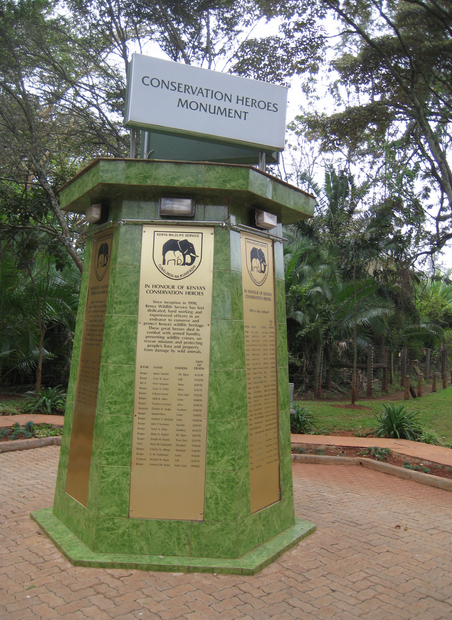
Picture above - KWS monument in honor of Kenyan Wildlife Rangers killed on active duty.
“Being a ranger was not a choice but a calling,” says Stephen Midzi, whose base is Shangoni Post in Kruger. “I was born for this, so had to fulfill what has already been written in my book of life.” Zakouma’s Ndotoingar says simply, “I’m proud of my work.” “Not a single guy has quit,” SANParks’ Jooste notes, adding that without the rangers like Midzi, poaching statistics would be a lot worse. “Look what would happen if we weren’t here.”
Every four days in Africa and around the world a ranger or Anti Poaching Operative is killed in their line of work. Many either face a quick death, are killed by contract shooters or tortured to death. The risks are endless yet wildlife security forces still risk their lives despite pittance [very little monetary income].
As explained International Animal Rescue Foundation Africa is challenging the South African government on shooting to defend of which the organisation wants a clear and precise “shoot to kill” law introduced for wildlife rangers and Anti Poachers not just SANDF. Furthermore I.A.R.F.A. calls on the government to not only authorize rangers to adopt this method of conservation but implement a NO conviction No Legal action clause within contract. Training and more equipment to be supplied to rangers too and rangers with no firearms to be equipped without delay.
International Animal Rescue Foundation Africa doesn’t stand alone either when it comes to such licence to kill policy. Over 90% of South Africans questioned agreed that a shoot to kill policy must be enforced to send a clear and precise message to poachers and king-pins that poaching will not be tolerated within the country. Should the organisation win it could see rangers in other countries authorized a licence to kill. Kenya is one such country on the continent of which KWS - [Kenyan Wildlife Service rangers] not only face death from poachers but are also heavily outnumbered by poachers that are slaughtering rhino and elephants.
The Peoples Verdict - Licence to Kill;
Back in November International Animal Rescue Foundation Africa and India started a public debate with regards to the shoot to kill policy. The debate has thus far seen quite a prolific response from which can be read below. Quite astonishingly we counted a mere dozen or more responses that were against the shoot to kill policy, whereas over 2,000 responses based from our Indian and South African debates called for a shoot to kill policy to be implemented.
Below is a handful of extracted responses for you all to read. You can join the debate by logging onto Facebook and clicking the link below. Alternatively you vote via our poll that will be the second third poll this year of which we will collect all results and begin passing these on to the government and ministries throughout Africa.
Roxanne Cochran stated - I am from South Africa. I agree fully with this notion. If they’re willing to take a life, they should be prepared to be shot down dead too. It’s very sad to see that most rhinos here have had there horns cut down for protection. It’s not natural and it breaks my heart that we have to go to such extremes to protect these beautiful creatures.
Gavin Hastings stated - Hello all, I am a serving soldier of the SANDF; I am just back from my 3rd deployment of 6 months from the Kruger. The problem id like to address is not man power or resources, it is the government of the country of South Africa and Mozambique who are now collaborating in the elimination of the species of rhino thanks to the bureaucratic impasse given to poachers of rhinos. As a soldier I am now “arresting” poachers. It is very difficult to maintain success and morale if you capture a person and he is extradited to re-do his killing the next week. I ask the international community to pressure my government. We need legislation to properly take care of the species survival and give the killers their fair due.
George Chimbai stated - In my country Malawi rhinos were once extincted and were re-introduced in the 1990s with rhinos from South Africa, without that Malawi wouldn’t have been boasting of having the BIG FIVE in its national parks and game reserves. South Africa as a supplier of endangered species to countries where they’re facing extinction I welcome and support the SHOOT TO KILL POLICY of these poachers.
Leisa Cope stated- I agree with shoot to kill only because I don’t see any other option. The consequences of killing animals not only brutally but into extinction needs to be this intense to at least make poachers think twice about what they are doing. If poachers choose to risk their lives then this is their own decision. How sad it is when it comes to this form of action.
Berdine Helderberg stated - Definitely shoot to kill - although, a warning shot might be needed first? (Legal wise..) Poachers know what they are doing, they know it is wrong and because they know they are untouchable, they continue committing these horrible horrible crimes. They simply do not care about the intense suffering of the animals and sometimes the babies too. If you can do it to a defenseless, helpless animal, you will do it to a human being too. Lastly, they will shoot any person that comes in their way, not thinking twice.
Kerryn Hay stated - Shoot to kill definitely. I have no sympathy for poachers even if they are disadvantaged/uneducated and trying to put food on table as some of you have argued - they are making the decision to brutally murder helpless animals and every action has consequences. Kill these criminals! why are we even considering giving them rights when animals have none. If it’s working in India then we must try it because nothing South Africa has done has helped thus far and time is running out while we debate the rights of ruthless criminals! I would prefer to see them die as slowly and painfully as the animals that they murder but let’s shoot to kill and make an example of them!
Heather Smith stated - These poachers are killing innocent animals, so why shouldn’t they expect the same treatment. Rangers are shooting to save these animals lives, poachers are shooting purely for money. You have my support all the way. Shoot to kill!!! Just as the poachers do.
Debbie Olivier stated - South Africa wake up! Allow our rangers to shoot to kill - no questions asked. We have entrusted our wildlife to them - we need to trust them with this too as they are well trained.
Donny De Mars stated - Why shouldn’t there be a shoot to kill law? I mean what makes you think these poachers would not do the same for any unarmed ranger who tries to bring them in. They are no better than drug traffickers and deserve even more severe punishment! A life for a life.
Robert Cates stated - I think a shoot to kill policy/law should be enacted not only to stop dead the ones doing it now, but also to SHOW/deter others thinking about doing it. I don’t think it should be even controlled by the police department… I think it should be an open season sort of policy… that should really put the scare in them.
Whoozie Blue Marlene stated - If you were running away from a bank having stolen a rare pink diamond the. The police would shoot you down dead. Are our rhinos not rare enough, aren’t they our beautiful pink diamonds?. Telling a poacher to stop or else does not work and if it does they are back in business chop chop. If this was installed it would work simply because no one wants to die. God left these animals in our care, so far the care has not been good enough I’m afraid. Protect our Rhino please because enough is enough !!
James Kipterem stated - I agree! Because rangers too are being targeted by these evil minded poachers. Even poachers, they have the same thought of “shoot to kill” whenever they meet rangers. So shoot to kill is the only remedy to a poacher, because, why break the law which we were passing together? that, ‘it is illegal to kill wild animals’. Instead of defending the law you break it. That is very bad. Always law defenders are more than breakers.
Jannette Slabbert stated - Any bad behavior must have real and costly consequences or you will never change it prison is obviously not enough of a penalty so if loosing your life is the price then so be it. It has proven effective in India then I say put the policy in SA too.
Russell Gordon stated - Future generation will blame us for not doing enough to have prevented the total extinction of the Rhino. So to address this now to preserve the Rhino for our future generations poachers and their ring leaders need to feel pain and by that I mean the ultimate sentence, the death penalty.
Laurian Knop stated - I vote shoot to kill poachers in self defense. Poachers are always armed and chose to kill the helpless and innocent. How many rangers have lost their lives to poachers? Self defense is not murder. Protecting those unable to defend themselves is not a criminal offense. Poachers are a scourge that need to be wiped out as they facilitate a bigger epidemic of terrorism, trafficking of drugs and children and general corruption. Why is this even being second-guessed? Do those opposed have something to lose should it be implemented?
Chris Switzer stated - I believe the continuity of a species, far outweighs any issues that might be brought up with regard to a shoot to kill policy. Poaching an endangered species, many of which on the brink of extinction, should be punishable by death.
Annmarie Botelho stated - I think that south Africa should have shoot to kill laws… if it keeps going the way it is we are going to lose are elephants and rhino …. it’s such a cruel trade and there really isn’t any need for it.
Gillian Curley stated - I don’t like the shoot to kill as the poachers are just doing what they are told to do and feed their families BUT something has to be done and if we can’t get the leaders and the buyers then yes sadly I agree to shoot to kill.
Marisol Davila stated - A policy of shoot to kill poachers will be a deterrent for the poaching business. Due to lax policies wildlife numbers are in the brink of extinction. Many economies depend on the tourism that wildlife attracts. Therefore, a harsh policy against poachers and their customers is key if any country wants to strengthen it’s economic survival in the long run. The message need to be loud and clear zero tolerance to poaching, no bits or ifs allow.
To take part in the debate that International Animal Rescue Foundation Africa is running you can comment by clicking here alternatively you can also hit the poll button below and tell us what you want. Please be aware that the poll expires one week from the date of this article of which we will not run another poll.
BEFORE voting please view the video below.
Conclusion;
International Animal Rescue Foundation Africa last year created data models that indicated their worst fears regarding wildlife poaching based on poaching deaths, natural deaths, gestation, deaths of unborn fetus, decreased populations of other larger fauna such as elephants and more. Model data has already shown that South Africa’s poaching rate will continue to increase and has provided very worrying numbers of final statistics supported by defense organisations working hard to stem the flow of poaching.
While none of us wants to see, read or hear of any living creature death - We must send a more stronger and decisive message into Asia and African poaching communities, and while tackling poaching is one thing we’ve also poverty to engage that will take the temptation away from individual opportunistic poachers that kill to fend for their families. Its these very communities that Asian traffickers and king-pins target as they know they are easy prey.
Look at it simply like this. If your living with no food, no electricity, no sanitation and require health support, are barely feeding your family or even yourself and living within a country that is doing little to decrease poverty then you will snap the chance up at anyone given moment to make money. Conservation organisations and leaders of Africa and world leaders must do more to decrease poverty around wildlife parks.
Failing this Data Models have shown that the white rhino will be verging near endangerment by 2017 of which the black rhino could be extinct in under five years within the wild [despite populations increasing]. Furthermore while the continent of Africa is still custodian to thousands of elephants, elephant populations are becoming more fragmented. Yesterday I.A.R.F.A reported a massive decline in South Sudan elephant populations that now stand at some 2,500. Giraffe populations are now at some 40,000 for the entire continent of Africa.
Bottom line is should Africa lose vast swathes of her wildlife then tourism will be affected too. Tourism brings in billions for the entire continent of Africa of which Africa’s wildlife is seen as the number one tourist attraction. A large number of countries depend on tourism for the economic growth. A recent study done for DFID concluded: “While poor countries only command a minority share of the international tourism market, tourism can make a significant contribution to their economies.
Eighty percent of the world’s poor (below US$1 a day) live in 12 countries. In 11 of these, tourism is significant and/or growing. Of the 100 or so poorest countries, tourism is significant (accounting for over 2% of GDP or 5% of exports) in almost half the low income countries and almost all the lower-middle income countries.” Using these same criteria and 1996 data, tourism is “significant” in an impressive number of African countries: Benin, Botswana, Burkina Faso, Cape Verde, Comoros, Djibouti, Eritrea, Ethiopia, Gambia, Ghana, Kenya, Madagascar, Mauritius, Namibia, Niger, Senegal, Sao Tome & Principe, Seychelles, Sierra Leone, South Africa, Swaziland, Tanzania, Togo, Uganda, Zimbabwe. Zambia and Mali just missed the cutoff in 1996.
According to the World Tourism Organization (WTO), Africa as a whole attracts just fewer than 4% of total world tourists and accounted for 2.0% of international tourism receipts in 1997. Of the Sub-Saharan countries, only South Africa is listed in the top forty tourism destinations worldwide, where it was 26th in 1997. The WTO calculated [1996] that Africa had just over 3% of world accommodation capacity (796,000 beds). The Africa region showed the strongest expansion in arrivals of any world region in 1997, up 8.1% over 1996. Furthermore, during the 1988-97 decade, Africa had an average annual growth of 7.2% in visitor arrivals, only slightly lower than East Asia/Pacific, which had the highest growth rate of all regions though from a much higher base than Africa. The average annual growth rate for tourist arrivals worldwide has averaged 5.0% for the past decade.
However - the number of tourists now arriving in SSA has grown over 300% since 1990, with 2012 marking a high of 33.8 million tourists who visited the region. Income generated from tourism has also climbed: Receipts from hotels, tours and other attractions in 2012 amounted to over US$36 billion and directly contributed just over 2.8% to the region’s GDP, according to the report issued by the World Bank back in 2013.
Wild animals are probably one of the first things people think of when asked about Africa. Seeing all the documentaries on television, we can only wonder and watch in awe as these mighty creatures roam the plains and jungles. Many are now protected in reserves and tourists can venture out on varying safaris to watch them in their nature habitats. What an incredible experience for both the amateur and professional photographer! Zambia holds the most natural of parks because the area is not accessible between November and March due to the waterways. Since the animals, plants, birds, and other natural elements are left alone, the area is truly spectacular when viewed each year after this rejuvenation period.
Safari rates as number four on many tour guide questionnaires when asking tourists why they wish to visit Africa. So in all if we continue to see such a vast decline in wildlife and lack of hard core enforcement we’ll most certainly see a copious decline in tourism revenue. I don’t need to explain what that will spell either.
International Animal Rescue Foundation has been challenged by only Humans Rights Christian Organisation of which stated we should not lobby or enforce a licence to kill poachers. All that can be said to the Human Rights players is that when there are no animals left, and revenue is seen as shrinking because of this then the Human Rights organisations can visit Africa and tackle more violent crime, lack of any employment, rape, murder, and more.
The time to act is now and not tomorrow. Stand by International Animal Rescue Foundation and help us enforce a shoot to kill policy within South Africa, Kenya and Tanzania.
Thanks
Board of Directors for External Affairs - Ead
Chief Executive Officer of Environmental Projects Africa - Michael L. Rooste
Chief Environmental Officer & CEO Dr Jose C Depre
Chief Environmental Registrar Europa - J. F. Williamson
External Affairs and Lead Investigation Officer - Vincent Van der spuy
externalaffairs@international-animalrescue-foundation.org.uk
You can help us by donating, to donate click the picture below that will take you to our donation application on Facebook. Alternatively you can donate to our communications site listed hereto at
www.international-animalrescue-foundation.org.uk
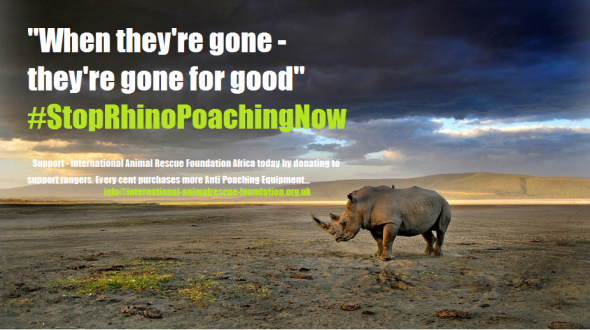
Boto Poaching - Amazon River Dolphin Threatened - Killed for Bait.
At the start of the 2000 deep within the Amazon Jungles the massacre began, even the baby dolphins were not spared nor the gestating females that had their young sliced out of womb hung up like a piece of dead flesh in a butchers shop. Without hesitation or even a shred of remorse these barbaric monsters pictured [August 2014] here sliced the baby out off the mothers womb flinging it to one side. Brazil has since laid down a hunting ban however poachers are not stopping and already in Peru, Boto’s are mercifully slaughtered just for bait.
Pink River Dolphins or the Amazon River Dolphin as its commonly known scientifically identified as Inia geoffrensis aren’t hunted to eat, oh no, no. Like many fisherman in the west catch smaller fish to catch the bigger species River Dolphins are caught simply for this reason of which they are butchered up into slabs of meat then thrown back into crates just to catch smaller species of fish commonly known as the piracatinga that feasts on rotten flesh of dead animals - in this case the Dolphin.
You’ve probably by now become quite used to the all to familiar sites of Japans Dolphin massacres - but what about the killing fields within the Amazon?, Some conservationists seem non-to-bothered to print about this, as these bastards rip the hearts and souls out of aquatic life - At the start of this year some two thousand Amazon River Dolphins were slaughtered as can be seen in the pictures below. However European and South and North American Conservation Groups are taking a stand and have since handed in a 50,000 signature petition in. While it may stop hunting in Brazil will it stop the poaching? Furthermore will the illegal hunting in Peru, Ecuador, Venezuela, Columbia, Bolivia, Guyana, Surinam and French Guinea stop too.
No one stopped these killings, many people outside off the Amazon are completely oblivious to the fact this horrifying atrocity actually exists. Now you’ll know though, were not going to stick for this anymore. International Animal Rescue Foundation Brazil plus many smaller conservation groups has known of this slaughter for the past several years. When the Federal government imposed a [temporary ban] five years ago all seemed quiet, unfortunately the hunting ban was lifted with many killed by August, its a wonder if the species will actually recover within this year alone before hunting ends. Since the start of August though Brazil has imposed a new [complete ban] but this hasn’t as explained stopped poachers and hunters that are now working their way down the rivers of the Amazon.
By the second half of the year [2014] over three and a half thousand River Dolphins were expected to be slaughtered. The number could even be higher as were now in November. what’s angered us even more is this - its completely ILLEGAL!
Sixty percent of the Amazon rain-forest is within Brazil and so Brazil is home to more Amazon River Dolphins commonly known as [Botos] than any other South American country. Botos live in the rivers and lakes of the Amazon and enter the flooded forest during high water season. The Amazon, and particularly the flooded forest, are threatened habitats. Since the 1980s the rate of deforestation and exploitation of the Amazon Rain-forest for mining, logging, human settlement and cattle ranching has increased significantly. These commercial activities pose a severe threat to the region’s indigenous people and wildlife.
“Every year, we see in the region Sustainable Development Reserve Mamirauá , the harbor porpoise population decrease by 7.5% per cent. That is not sustainable”, he says. According to Vera, the aggravating factor is that fishermen prefer young River Dolphins, which hardly ever reach reproductive age. A male dolphin takes 10 years to reach reproductive age and the female between 6 and 7 years. Gestation takes between 11 and 13 months, furthermore, the young mother feeds little ones for two years. The slaughtering of the young is having a massive impact on the Amazon River Dolphin species of which even with a ban in place will see the entire species wiped out should the world not come together now to enforce a complete in Venezuela, Peru, Columbia, Bolivia, Guyana, Surinam and French Guinea.
The Amazon River Dolphin’s diet mainly consists of piracatinga which is a carnivorous catfish eaten by the locals and indigenous tribes. However humans in the Amazon require 4,500 [Boto’s] to harvest every year piracatinga.
So why is this slaughter not being seen among the western conservation world? Well basically this method of harvesting piracatinga which is [only illegal in Brazil August 2014] only began back in 2000. And despite the entire practice being 100% [illegal] governments and law enforcement agencies are doing little to stop it.
When the fisherman capture the Amazon River Dolphins slaughtering of the dead animal is usually done there and then so that the carcass doesn’t rot to quickly. the carcass is then placed into wooden crates of which the fishermen use to capture the piracatinga fish. The crates of carved up Dolphin meat inside the crate is then lowered into the water. Fisherman await and the piracatinga fish move in feasting of the dead dolphin rotting carcass. From there its easy pickings for the fishermen.
Its been widely reported in some magazines, articles and media that Brazil has indeed banned this practice which from July [2014] they did. However these media and press reporters [even science based ones] may want to visit the jungles of the Amazon of which this practice is STILL ongoing and has been since 2000. Conservationists were delighted at hearing the ban announced by the government of Brazil which owns the largest part of the Amazon Rain Forest. “It’s the biggest fisheries ban since 1967 when Brazil’s original faunal protection laws were made,” says Jone César of the Friends of the Manatee Association, a conservation group based in Manaus, Brazil.
Just because Brazil has banned the practice though doesn’t mean for one minute in the rivers of Eqador or Peru for example from which the River Dolphin also inhabits and is not within [Brazilian territory] that fishermen will continue the trade. Furthermore until the Brazilian ban is [completely enforced] its expected that fishermen will kill thousands more Boto’s to store for later fishing. Then of course we have poachers that can and will still flout this ban, and sadly this has already been seen.
And before we all start jumping up arms in the air celebrating the soon to be enforced Brazilian ban - Killing Botos for this purpose is spreading all over the Amazon and has been already been reported in Peru. It is a threat to the future of Botos. Should the governments of Venezuela, Columbia, Bolivia, Peru, Guyana, Surinam and French Guinea not follow suite more River Dolphins will be slaughtered just for a bait. While its also illegal to hunt Boto’s in Brazil by the start of [2015] its not illegal for hunters or poachers to pass up the river to Brazilian fishermen dead River Dolphin Carcasses. Dr Jose Depre - International Animal Rescue Foundation’s Chief Environmental Officer picked holes in this law and sadly this does need amending now to ensure that even the dead flesh of Amazon River Dolphins is not sold onto fishermen upstream.
“Its highly unlikely that the ban within Brazil is actually going to have any affect what-so-ever as policing such a massive area of rain-forest is about as easy as policing mangrove jungles the size of America” said Dr Josa Depre. Furthermore Dr Williamson Environmental CEO for I.A.R.F Europea stated “While the Killing of River Dolphins is 100% illegal within Brazil coming this new year it will not under any circumstances deter poachers elsewhere, we have much work to do rather than just focusing ones attention on Brazil, we need to push for the same laws in Venezuela, Peru, Columbia, Bolivia, Guyana, Surinam and French Guinea immediately, however don’t think for one moment this is going to be an easy ride”.
The ban within Brazil as explained will be enforced at the end of the year. Fisherman catch on average a year 140 tons of piracatinga fish so in all due respects its highly unlikely cruel and barbaric killing of our Amazon River Dolphin is actually going to stop.
You can help by signing this petition below as soon as possible.
Read more here on the petition that was delivered this August: http://www.ale.am.gov.br/2014/08/21/comissao-do-meio-ambiente-recebe-ativistas-do-alerta-vermelho/
With thanks to Dr Josa C. Depre Chief Environmental Officer and Dr J. Williamson CEO Europa IARFE
Corruption - Poverty - Relocation - Shoot to Kill
Corruption-Poverty-Relocation-Shoot to Kill Policy!
In Central Africa approximately 80% of rangers are, on some level, involved in trafficking. Because communities are small, some rangers and poachers know each other directly and others, occasionally, are bribed. Luc Mathot of Conservation Justice has organized the arrest of 4 rangers in the Congo in 2012 and 3 from Gabon in 2013. Ranger involvement is less common in South Africa. Strict laws are enforced to curtail such actions and rangers found conspiring with poachers are relived from duty. However corruption is more widespread and larger than you could possibly imagine. Within SANParks for instance evidence has yet again emerged of five ranger involved in poaching activities. When this information is passed onto SANParks their response is “silent”. Back in 2013 we advised SANParks that they must routinely undertake polygraph testing of all rangers and staff involved with wildlife duties. Again they fail to acknowledge our concerns.
Illicit wildlife trade is the fourth largest illegal activity worldwide and is worth $23 billion US dollars per year. In order to understand what is happening in illegal trade, the prices that wildlife products yield must be monitored. Scarcity of a product reflects higher prices whereas low prices reflect abundance. High profit and turn over are the driving factor and poachers have a very small window to work in. If the probability of being caught and punished (i.e. imprisonment or death) is high, this will alter the expected price tag. Many reserve barriers are not deterrents for poachers, as they are minimal (i.e. barbed wire and sparse fencing). Moreover, legislation and borders between subsistence hunting and poaching are blurred. The majority of rhino populated countries have low penalty policies. However, Botswana has the lowest poaching rate due to its ‘zero tolerance-shoot to kill’ policy. The Defense Force treats apprehended poachers as aggressive military threats if they do not surrender their weapons immediately they are shot dead on site - International Animal Rescue Foundation supports this regardless of some public outcry we have to show poachers that killing our wildlife will most certainly involve rangers taking poachers out. Other factors that keeps poaching minimal is the country’s remoteness and low populace. Conservationists were looking to relocate South African rhinos via helicopter to Botswana for these reasons (Carrington, 2014). However, due to high cost and inhumane transportation complications this option has been rejected.
What’s more inhumane though? the transportation of rhinos and so called costs or the killing of rhinos? Personally we’d like to see a 50% score of rhinos moved from the Kruger to Botswana were breeding can take place securely and a shoot to kill policy is fair game. Poachers see South Africa as easy pickings. Until an immediate shoot to kill policy is given our rhinos will be in danger.
Poverty and poaching go hand-in-hand. Impoverished communities are more likely to engage in illegal activities so long as there is a demand for goods. Poaching organizations turn to disadvantaged communities to recruit new personnel. The sole source of income for these remote areas is farming, however, because of its remoteness and lack of transportation, selling produce and livestock is limited. If communities had ways of traveling further into more populated areas, they would have a better chance at sales. However, due to word of mouth, some consumers will travel to the farms to purchase goods, which allows farmers to raise their prices. These methods are sill no match for payouts from rhino horns and ivory. Because poachers are well financed and wildlife products can easily be turned into cash, the decision to poach becomes alluring to those in need. Factors such as social, political, and environmental status are also considered.
Those who begin as poachers have the opportunity to get promoted to better paying, less conspicuous positions. A simple poacher can move up to a chief position and organize trafficking for poachers. One could also sell his own ivory and become a trafficker. The ‘middle-man’ position takes product to the richer barons within cities. These people have an actual chance at moving up after accumulating enough money that allows them to work in less conspicuous ranks. According to TRAFFIC-ASIA, there is a direct link between the rise in regional incomes and illegal wildlife trading. Poachers who enter protected areas are more prone to be risk takers. Some are bribed with cigarettes, beer, money, or other items not so commonly found in local communities.
Poverty is not the only driving force in poaching. Illegal trade has become war-like with a complex network of violent militias, terrorists, government corruption, and organized crime, fueled by demand predominantly from Asia and the rising economic status in Vietnam. In 2012, a 10 kg rhino horn would bring in $20,000 per kg on the African-based Asian-run market. Today, prosperous consumers in China and Vietnam have driven the price up to $65,000 per kg and can fetch as much as $100,000 on the black market, making horns more valuable than platinum, gold, or cocaine. Because of its’ increasing prosperity, Vietnam holds the chief market on rhino horns, yet it has little to do with medicinal ailments. They are sold as recreational drugs for partygoers, aphrodisiacs, for detoxification from excessive food and/or alcohol consumption for the more affluent, décor, gifts such as horn bracelets, and necklaces, as well as a deceptive ‘miracle drug’ to cheat cancer patients out of cash. In 2008, the Vietnamese Embassy was found to be a participant in illegal rhino horn trade.
Conclusion:
South African government must implement a shoot to kill policy as soon as arms are not dropped. poverty must be tackled within “all African wildlife organisations” as this is one primary reason our wildlife is being slaughtered. Corruption must be tackled head on and NOW. Relocation of South African Rhinos to Botswana where a more policed approach is seen must be on the agenda.
Dr J. C. Depre and Ambassador S. Farthing
Rhino Welfare Africa.
International Animal Rescue Foundation
externalaffairs@international-animalrescue-foundation.org.uk
RESEARCH TEAM BELOW
Anonymous. (2014, September). Former poacher. (O. Gasaya, & L. Jorgensen, Interviewers)
Burton, J. (2014, September). CEO at World Land Trust. (L. Jorgensen, Interviewer)
Carrington, D. (2014, September). Inside Africa. Retrieved September 2014, from CNN World:http://www.cnn.com/2014/09/11/world/africa/rhinos-on-a-plane/index.html?hpt=hp_c4
Coghlan, A. (2014, January). Record poaching pushes rhinos towards extinction. Retrieved September 2014, from New Scientist-Life: http://www.newscientist.com/article/dn24894-record-poaching-pushes-rhinos-towards-extinction.html#.VAuOJWSwJZ8
Duffy, R., & St. John, D. (2013, June). Poverty, Poaching, and Trafficking; What are the Links? Retrieved September 2014, from Rhino Owners: http://www.rhinoowners.org/WYSI/assets/Documents/EoD_HD059_Jun2013_Poverty_Poaching.pdf
Hill, G. (2014, September). Director of Risk and Intellegence at Africa.cx. (L. Jorgensen, Interviewer)
Mathot, L. (2014, October). Founder and Director of Conservation Justice. (L. Jorgensen, Interviewer)
Montesh, M. (2012). Rhino Poaching: A New Form of Organised Crime. Retrieved September 2014, from University of Soutb Africa: http://www.unisa.ac.za/claw/news/wp-content/uploads/2013/04/rhion-poaching-for-profit.pdf
Pandolfi, A. (2014). Wildlife Conservation UAV Challenge Supporters. Retrieved October 2014, from Kashmir World Foundation:www.kashmirworldfoundation.org
Peace Parks Foundation. (2014). COMBATTING WILDLIFE CRIME. Retrieved September 2014, from Peace Parks Foundation: http://www.peaceparks.org/programme.php?pid=24&mid=1021
Sandram, S. (2014, September). Wildlife Officer at Gonarezhou National Park. (L. Jorgensen, Interviewer)
Sas-Rolfes, M. ‘. (2012, February). THE RHINO POACHING CRISIS: A MARKET ANALYSIS. Retrieved September 2014, from Save The Rhino Trust: http://savetherhinotrust.org/programmes/84-the-rhino-poaching-crisis-a-market-analysis
Thomas, R. (2012, August). “Loose horns”, surging demand and easy money create “perfect storm” for rhino poaching. Retrieved September 2014, from TRAFFIC: http://www.traffic.org/home/2012/8/21/loose-horns-surging-demand-and-easy-money-create-perfect-sto.html
TRAFFIC. (2008). TRAFFIC’s engagement on African rhinoceros conservation and the global trade in rhinoceros horn. Retrieved September 2014, from TRAFFIC: http://www.traffic.org/rhinos/
Yale Environment360. (2014, January). e360 Digest. Retrieved September 2014, from Environment 360:http://e360.yale.edu/digest/more_than_1000_rhinos_poached_in_2013_south_african_officials_say/4051/
Read more here on the very people trying to stop us from undertaking our work - Liz Bradly from the UK a serial stalker and known sociopath has indulged in countless hours of trying to report the very articles that help save animals just to hide behind a veil of CELLULAR DEVICES. This time she again was caught red handed completely forgetting that the site she had just reported too was only to make her message a cowardly one public.
http://saynotodogmeat.net/2014/07/23/under-attack-from-hate-groups/
Now we know whom the animal hater is - we’re going to deal with that animal hater in the same manner as we do dog fighters.
Sudanese Badger Bat - Niumbaha superba
Every month there is an estimated twenty species of new flora and fauna located on Planet Earth. However back in 2013 scientists from the University of Bucknell University and Fauna & Flora International located deep in the heart of South Sudan a new bat species commonly named as the Pied Bat or Badger bat. And what a stunningly beautiful bat this is too which oddly does look identical to the markings of our Chinese Panda.
The scientific name related to this species of bat was thought to be related to the Glauconycteris superba which for now thankfully is listed as [least concern] on the International Union for the Conservation of Nature’s Red List identified back in 1939 Dr Haymen whom was the first to discover this particular species of bat. However the new “genera” pictured was discovered in 2013 DeeAnn Reeder, an Associate Professor of Biology at Bucknell.
This species of Pied bat (Glauconycteris superba) was bordering endangerment back in the mid 1990’s of which from 1996-2004 was listed as [vulnerable], to date though its population trend or how many Pied bats actually exist is currently unknown.
So whats the news on the “Panda bat” as its commonly named?
This is a special bat, and not just because of its strikingly beautiful spots and stripes. This is a rare specimen, whose discovery in South Sudan led researchers to identify a new genus of bat. The bat is just the fifth specimen of its kind ever collected. DeeAnn Reeder, an Associate Professor of Biology at Bucknell and first author of the paper announcing the new bat genus, recognized the bat as the same species as a specimen captured in the Democratic Republic of the Congo in 1939. That specimen was classified as Glauconycteris superba, but after detailed analyses she and her colleagues determined it did not belong in the genus Glauconycteris.
It was so unique that they needed to create a new genus for it. Reeder and her colleagues named the new genus Niumbaha, which means “rare” or “unusual” in Zande, the language spoken in Western Equatoria State, where the bat was captured. The bat’s full scientific name is Niumbaha superba, reflecting both the rarity and the magnificence of this creature.
“Our discovery of this new genus of bat is an indicator of how diverse the area is and how much work remains,” Reeder said in a press release.
So what’s the news on this species of bat?
Well firstly we can state that this species of bat (Niumbaha superba) although not the same genera was primarily located by Dr Haymen in 1939 Niumbaha superba oddly is not listed on the International Union for the Conservation of Natures Red List of (threatened species) as this newly discovered genera is listed as [vulnerable] wheres its relative Glauconycteris superba is listed as least concern.
The pied (panda bat) is found in the Democratic Republic of the Congo, Ivory Coast, Ghana and South Sudan, the genus Niumbaha was identified by Reeder, Helgen, Vodzak, Lunde & Ejotre, in 2013. The species lives in natural habitats, tropical or sub-tropical rain-forests or tropical moist lowland forests.
To date we are only aware that the current threats surrounding this species is habitat loss. However this soon could change of which threats from hunters hunting for the bush meat trade could see the species pushed into extinction. Habitat loss or habitat fragmentation is playing quite a pivotal role with regards to many species of bats declining worldwide. However other species of bat that normally roost in caves seem to be less threatened by such habitat human disturbances.
Bats make up a quarter of the mammalian diversity on the planet, and they are the only mammal that can fly. The African continent and Madagascar and its associated islands contain about 258 extant species of bats, which comprises about 25% of the global bat diversity. Bats are an important component in ecosystem health and condition. They occupy a critical niche, the insectivorous species being primary nocturnal predators and are susceptible to increased levels of pesticides, while frugivorous species are critical for forest regeneration. Many plants are dependent on these night time visitors (e.g. Baobab), for both pollination and seed dispersal.
Both groups of bats are also greatly susceptible to environmental change especially Niumbaha superba. The effects of habitat and climate change on these species are unknown, and if so, there is much speculation as to the impacts, both positive and negative. These impacts on bats have a direct impact on food security and human related zoonotic diseases. What is of primary concern is that we know very little about the distribution, abundance or the biology of the various species. Also from a cultural perspective, bats are perceived by most African cultures as associated with dark and evil magic, and are persecuted.
Within western, north and the Central African Republic (bats) are hunted and eaten of which this year has been linked again to the worlds most deadliest virus - Ebola Hemorrhagic Fever (EHF). While hunting though plays a threat to the decline of bat species habitat fragmentation is most certainly the largest threat to the all species/genera.
Because bats have low reproductive rates, populations are very susceptible to elevated mortality or depressed recruitment. There is scientific concern about the conservation status of bats as many species of bats are increasingly affected by multiple actions of humans such as ignorance, suspicion, pesticide poisoning, roost destruction and closure, habitat loss, over-exploitation, and extermination as pests. Avoid disturbance of bats in caves, including the lighting or use of fires in caves. Some bats have moved into residential areas because human expansion has resulted in loss of habitat, forcing bats to look for alternative roosts in which to live and raise their young.
And of course while we know habitat loss is currently a threat to this species of Niumbaha superba other threats could/will also play a role in its decline that could evidently see this new genera of bat killed off. These these threats are as you may have guessed “human made up myths”..
An uncontrollable, irrepressible fear of bats may exist, but it is often the result of centuries of prejudice, misinformation and ignorance about bats. Dracula and other horror stories have contributed greatly to these misconceptions causing people to fear them and therefore be unconcerned about their conservation. Such as;
- The incidence of rabies is rare.
- Bat droppings in buildings usually are not a source of Histoplasmosis.
- Bats are not filthy and will not infest homes with dangerous parasites.
- Bats are not aggressive and will not normally attack people or pets.
- South African bats do not feed on blood. (Vampire bats, which do feed on blood, live in Latin America) and the feasting on blood is mainly of cattle or other large mammalians - although there has been some very small isolated rare cases of Vampire bats attacking humans and feeding of them. Again this is (extremely rare).
So what else do we know about Niumbaha superba other than the threats currently facing the species, future threats and habitat degradation?
OK firstly the Niumbaha superba is really more stripped like a badger but does have we suppose some type of identical markings to that of the Chinese Panda. Niumbaha superba has some pretty amazing spots and stripes with around one and a half centimeters of fur covering most of its body manly on the back and undersides. Its cranial characters, its wing characters, its size, the ears literally everything you look at doesn’t fit that of the previous species located back in 1939 by Dr Haymen stated Reeder. You can read more on Reeder’s discovery here
Niumbaha superba is an insectivorous bat meaning it feeds primarily on just insects, insectivorous bats are critically important to the environment as they help keep pests in control that would otherwise if not controlled damage vast swathes of crops, trees, plants and invade human populated areas. Insectivorous bats are also very important to humans as they help keep mosquitoes in check that endanger human life by the spread of Malaria which is known to be one of the Africa’s largest human killing viruses in.
So if ever your in South Sudan do keep a lookout for this stunning and most beautiful bat commonly named as the (pied bat, little badger bat, badger bat or panda bat).
For more information on African and international conservation projects please view our Facebook page below.
International Animal Rescue Foundation Africa
For further information please email us hereto;
info@international-animalrescue-foundation.org.uk And don’t forget to please donate to our cause via clicking the link here >DONATE< Our transparency register can be viewed here of which is updated every six months and due for update this coming week. And don’t forget to subscribe for free to our Environmental News and Media site of which you are automatically sent news as its pressed directly to your email address. Subscribe here at www.speakupforthevoiceless.org
South Africa: President Says Dogs Should Not Be Mans Best Friend
According to the South African president Jacob Zuma, owning a pet is part of ‘white culture’ and people should focus on family welfare instead. He says a dog should not be man’s best friend. The president’s statement, which was made a little over a year ago was met by anger from many pet lovers.
His presidential office tried to smooth things over by telling Star news he was encouraging “the previously oppressed African majority” to uphold its own culture.
“Will I become ‘more African’ if I kick my dog, President Zuma,” asked an angry pet owner.
One humorist wrote: “Well, that pretty much rules out that photo opportunity with Zuma, the Obamas and their pet dog, Bo, in the White House.”
During his speech to an appreciative crowd in his home province KwaZulu-Natal, the president said people who love dogs more than people have a “lack of humanity” and that some people are trying in vain to “emulate whiteness.”
“Even if you apply any kind of lotion and straighten your hair, you will never be white,” said the president.
Star news said he gave examples of people loving animals more than other human beings — letting a dog sit in the cab of a truck while a worker has to sit in the back in the rain, or rushing an animal to the veterinarian while ignoring sick relatives or workers.
Saynotodogmeat.Net is pleased to announce South Africa is participating in our Global March For Dogs and Cats In The Meat Trade!
We invite all South African pet lovers to join our march and bring your family and pets too, April 4th, 2015.
Africa hosts a lucrative dog and cat meat trade which has been kept in the shadows for too long. We are fighting to end the cruel pet meat trade in Africa and Asia. People from many nations will be marching with us, as one collective voice and we hope you will join us too. Please go ahead and mark your calendar. Join us and become the voice of the voiceless.
For information on our global march or how you can help us, please email us: CONTACT@SAYNOTODOGMEAT.INFO.
Thank you for reading,
Michele Brown.
GLOBAL MARCH
Saturday April 4th, 2015 Saynotodogmeat.Net is hosting a Global March for dogs and cats in the live meat trade. Please march with us, in your country. It will be an orderly and peaceful march but we need more ‘demonstration leaders.’ If you can help us, PLEASE EMAIL: CONTACT@SAYNOTODOGMEAT.INFO
Bring your family, children, pets and banners; we need as many people as possible, worldwide. Please mark your calendar and join our march. If you haven’t already done so, please click the box to let us know you are coming: https://www.facebook.com/events/294347744053559/
WE ARE NOW ACCEPTING DONATIONS
Saynotodogmeat.Net is now accepting donations: PLEASE MARK ALL DONATIONS “SAY NO TO DOG MEAT.NET” https://www.facebook.com/SayNoToDogMeat/app_117708921611213
No donation is too small and we are very appreciative of your help and support. Very soon we will be writing a full article outlining where donations will be used. You will receive an electronic receipt and we will too, which we will keep for historical data purposes. NO DONATION will be used to produce clothing with logos on, badges or banners. Donations are NOT for the directors. ALL MEMBERS FUND THEMSELVES.
PLEASE CONTINUE TO SIGN AND SHARE OUR SAYNOTODOGMEAT.NET PETITIONS; WHEN COMPLETED THEY’LL BE WILL BE HAND DELIVERED
PETITION FOR SOUTH KOREA
https://www.change.org/en-GB/petitions/president-geun-hye-park-take-dog-cat-meat-off-the-menu
PETITION FOR VIETNAM and THAILAND ANTI-SMUGGLING
https://www.causes.com/actions/1764795-a-petition-to-president-truong-tang-sang-moj-prime-minister-yingluck-shinawatra
PETITION FOR HEALTH MINISTER OF VIETNAM
https://www.causes.com/campaigns/71258-minister-of-public-health-thi-kim-tien
PETITION FOR NAGALAND
https://www.change.org/en-GB/petitions/additional-chief-secretary-take-dog-meat-of-nagaland-menu
PETITION TO BAN THE TRADE IN NIGERIA
https://www.change.org/en-GB/petitions/governor-of-lagos-hon-babatunde-fashola-ban-the-nigerian-dog-meat-trade-lagos
LETTER TO THE PRESIDENT OF THE PHILIPPINES
http://saynotodogmeat.net/2014/04/04/email-the-philippines-president-to-end-the-dog-meat-trade/
PLEASE SEND TO THE MUSLIM COUNCIL
http://saynotodogmeat.net/2014/01/17/open-email-to-the-muslim-council-of-great-britain/
PLEASE HELP THE PEOPLE OF TURKANA HERE
http://saynotodogmeat.net/2014/01/31/turkana-africa-emergency-aid-letter/
EMAIL THE GOVERNOR OF NIGERIA: New Address: info@nigeria.gov.ng
http://saynotodogmeat.net/2013/12/03/email-excellency-dr-honorable-alausa-excellency-honorable-babatunde-fashola/
JOIN THE WORLDWIDE GLOBAL EVENT HERE TODAY
PLEASE EMAIL US A.S.A.P FOR INFORMATION ON HOW YOU CAN HELP. SATURDAY 4TH APRIL 2015 – TIME TO MARCH FOR DOGS AND CATS IN THE MEAT TRADE.
JOIN HERE https://www.facebook.com/events/294347744053559/ SHARE EVERYWHERE WILDLY
SayNoToDogMeat.Net FACEBOOK and TWITTER
Email: contact@saynotodogmeat.info
#saynotodogmeat
ALL RIGHTS RESERVED
PLEASE CREDIT THE ORGANISATION WHEN SHARING
Dog Meat Is Big Business in Nigeria
In a city where animal activists are almost invisible, dogs are crammed into small cages and trucked into Calabar from North Nigeria, to the waiting hands of dog butchers who hack them to death for dog meat.
Nigeria has a booming dog meat trade and the city of Calabar is one of it’s biggest hot-spots, where dog meat is openly sold on street corners and eaten by a broad spectrum of people who refer to it as ‘4o4.’ Chunks of dog meat can sell for as little as a hundred naira (less than a dollar), while a whole pot of dog meat can sell for as much as N14,000 or $87.00.
In Calabar, eating dog meat is seen a way of relaxing for some people and they can’t see whats wrong with it. However, people in Calabar who are against eating dog meat say “It is inhuman to eat up a pet, especially a dog which can become a family member.” Dog eaters reply “It is something as old as our culture. Our forefathers ate dog meat and we grew up learning to eat dog meat and by all standards, it is ok”.
Dog eaters far outnumber non-dog eaters in Calabar where its pet meat trade is lucrative and no matter how many dogs they kill, there’s always buyers waiting to eat them.
Weekends are the busiest time for slaughtering and eating dogs, especially Sundays when people in Calabar like to get together with family and loved ones and relax and eat dog meat.
Interestingly, women in Calabar eat just as much dog meat as men. Throughout Asia, dog meat is eaten mainly by men and women are shunned from eating it for a variety of reasons, mainly because men believe dog meat boots a man’s virility and is therefore dangerous for women to indulge in.
Dog meat used to be restricted to certain areas in Calabar and was mainly served with palm wine. Due to clever marketing, dog meat in Calabar is now a mainstream food which is served like any other restaurant food, with multiple choices of side dishes and beverages.
Just like in Asia a few decades ago, dog meat has gone from being eaten secretly to chic restaurant food that’s accepted everywhere, thanks to some clever marketing by dog traders, dog butchers and dog meat cooks.
In the same way Saynotodogmeat.Net are fighting Asia’s dog and cat meat trade, we will continue to fight Africa’s cruel pet meat trade too. We won’t stop until the dog and cat meat trade is brought to an END in Africa and Asia.
Thank you for reading,
Michele Brown.
GLOBAL MARCH
Saturday April 4th, 2015 Saynotodogmeat.Net is hosting a Global March for dogs and cats in the live meat trade. Please march with us, in your country. It will be an orderly and peaceful march but we need more ‘demonstration leaders.’ If you can help us, PLEASE EMAIL: CONTACT@SAYNOTODOGMEAT.INFO
Bring your family, children, pets and banners; we need as many people as possible, worldwide. Please mark your calendar and join our march. If you haven’t already done so, please click the box to let us know you are coming: https://www.facebook.com/events/294347744053559/
WE ARE NOW ACCEPTING DONATIONS
Saynotodogmeat.Net is now accepting donations: PLEASE MARK ALL DONATIONS “SAY NO TO DOG MEAT.NET” https://www.facebook.com/SayNoToDogMeat/app_117708921611213
No donation is too small and we are very appreciative of your help and support. Very soon we will be writing a full article outlining where donations will be used. You will receive an electronic receipt and we will too, which we will keep for historical data purposes. NO DONATION will be used to produce clothing with logos on, badges or banners. Donations are NOT for the directors. ALL MEMBERS FUND THEMSELVES.
PLEASE CONTINUE TO SIGN AND SHARE OUR SAYNOTODOGMEAT.NET PETITIONS; WHEN COMPLETED THEY’LL BE WILL BE HAND DELIVERED
PETITION FOR SOUTH KOREA
https://www.change.org/en-GB/petitions/president-geun-hye-park-take-dog-cat-meat-off-the-menu
PETITION FOR VIETNAM and THAILAND ANTI-SMUGGLING
https://www.causes.com/actions/1764795-a-petition-to-president-truong-tang-sang-moj-prime-minister-yingluck-shinawatra
PETITION FOR HEALTH MINISTER OF VIETNAM
https://www.causes.com/campaigns/71258-minister-of-public-health-thi-kim-tien
PETITION FOR NAGALAND
https://www.change.org/en-GB/petitions/additional-chief-secretary-take-dog-meat-of-nagaland-menu
PETITION TO BAN THE TRADE IN NIGERIA
https://www.change.org/en-GB/petitions/governor-of-lagos-hon-babatunde-fashola-ban-the-nigerian-dog-meat-trade-lagos
LETTER TO THE PRESIDENT OF THE PHILIPPINES
http://saynotodogmeat.net/2014/04/04/email-the-philippines-president-to-end-the-dog-meat-trade/
PLEASE SEND TO THE MUSLIM COUNCIL
http://saynotodogmeat.net/2014/01/17/open-email-to-the-muslim-council-of-great-britain/
PLEASE HELP THE PEOPLE OF TURKANA HERE
http://saynotodogmeat.net/2014/01/31/turkana-africa-emergency-aid-letter/
EMAIL THE GOVERNOR OF NIGERIA: New Address: info@nigeria.gov.ng
http://saynotodogmeat.net/2013/12/03/email-excellency-dr-honorable-alausa-excellency-honorable-babatunde-fashola/
JOIN THE WORLDWIDE GLOBAL EVENT HERE TODAY
PLEASE EMAIL US A.S.A.P FOR INFORMATION ON HOW YOU CAN HELP. SATURDAY 4TH APRIL 2015 – TIME TO MARCH FOR DOGS AND CATS IN THE MEAT TRADE.
JOIN HERE https://www.facebook.com/events/294347744053559/ SHARE EVERYWHERE WILDLY
SayNoToDogMeat.Net FACEBOOK and TWITTER
Email: contact@saynotodogmeat.info
#saynotodogmeat
ALL RIGHTS RESERVED
PLEASE CREDIT THE ORGANISATION WHEN SHARING
Africa: Live Dogs Exchanged For Palm Oil
Danwaki Dog Market is one of the main dog markets in Nigeria where live dogs are bartered in exchange for palm oil. Thursday mornings are the main day, at the Plateau State Dog Market, Danwaki.
On the day before (Wednesday), Kanke dog vendors get their stalls ready to attract as many customers as possible. Most Nigerian markets traders arrive at dawn, but for Danwaki, many traders travel through the night in lorries because by 4.00am the market is already bustling with activity. By 5.00am business is well underway.
Dog traders and buyers travel all the way from states like Cross Rivers, AkwaIbom, Benue, Nasarawa, Taraba, and many other southern states. Dog traders from neighbouring countries of Cameroun and Ivory Coast also frequent this dog market. Traders bring goods from their home states, in exchange for live dogs.
Palm oil from Calabar is known as “red gold,” giving Calabar traders an upper hand in doing business, as they exchange live dogs over for the equivalent value of palm oil.
A regualr dog buyer at Danwaki dog market, Mrs. Bassy Essien says she travels to the dog market twice a month to exchange palm oil for dogs because the business is “lucrative and rewarding,” the only risk involved is having to travel through the night all the way from Calabar to Jos in a lorry.”
She says once she gets the dogs back to Calabar they “sell like hot cakes” because their cooked as delicacies at local hot-beer joints like the Marina Beach spots, where politicians and foreign nationals sit outside in the cool of the evenings and enjoy eating dog meat.
She says:“With dog meat served together with hot local beer, an evening is made in Calabar!”
Another dog trader who calls himself Akpan said: “I have lived all my life in Calabar, but 12 years ago I started my dog business, that I discovered Marina Spot. When I see big politicians enjoy the delicacy dog meat I feel exceedingly fulfilled that I am a part of their joy.”
Dogs are bred in Plateau State for dog meat. [ NOTE: Breeding dogs for consumption means DOG FARMS.]
In Kanke Local Government Area it is considered a great honour to welcome a visitor with dog meat delicacy. Dog meat has now become a trend in most famous “joints,” even in Jos city. People joke that dogs which westerners call “man’s best friend” has now been renamed “man’s best taste.”
Does Dog Meat Have Powers To Cure?
Many people who eat dog meat falsely believe the meat has medicinal properties, including the false belief that dog meat improves a man’s sexual performance. This ties directly in with customers enjoying tough dog meat, which is brought about through cruel methods of slaughter which are done to deliberately flood the dog’s body with as much adrenaline s possible - making the meat as tough as possible. This is falsely believed to enhance a man’s libido. It will NOT.
Dog meat contains no magic, no power and no cures. If you’re impotent then seek professional medical help or see a sex therapist, but do NOT expect to get relief from eating dogs or cats.
Some people believe dog meat cures a lot of disease such as malaria, typhoid, dysentery in children, and even protection against witchcraft. It is falsely believed by some dog meat eaters that if they eat enough dog meat they will be protected from evil. There is no scientific evidence proving dog meat does anything except cure hunger.
Veterinarian Dr. Pam Musa believes dogs are inherently emotional and friendly to humanity and that slaughtering dogs for food is excessively cruel.
Thank you for reading,
Michele Brown.
GLOBAL MARCH
Saturday April 4th, 2015 Saynotodogmeat.Net is hosting a Global March for dogs and cats in the live meat trade. Please march with us, in your country. It will be an orderly and peaceful march but we need more ‘demonstration leaders.’ If you can help us, PLEASE EMAIL: CONTACT@SAYNOTODOGMEAT.INFO
Bring your family, children, pets and banners; we need as many people as possible, worldwide. Please mark your calendar and join our march. If you haven’t already done so, please click the box to let us know you are coming: https://www.facebook.com/events/294347744053559/
WE ARE NOW ACCEPTING DONATIONS
Saynotodogmeat.Net is now accepting donations: PLEASE MARK ALL DONATIONS “SAY NO TO DOG MEAT.NET” https://www.facebook.com/SayNoToDogMeat/app_117708921611213
No donation is too small and we are very appreciative of your help and support. Very soon we will be writing a full article outlining where donations will be used. You will receive an electronic receipt and we will too, which we will keep for historical data purposes. NO DONATION will be used to produce clothing with logos on, badges or banners. Donations are NOT for the directors. ALL MEMBERS FUND THEMSELVES.
PLEASE CONTINUE TO SIGN AND SHARE OUR SAYNOTODOGMEAT.NET PETITIONS; WHEN COMPLETED THEY’LL BE WILL BE HAND DELIVERED
PETITION FOR SOUTH KOREA
https://www.change.org/en-GB/petitions/president-geun-hye-park-take-dog-cat-meat-off-the-menu
PETITION FOR VIETNAM and THAILAND ANTI-SMUGGLING
https://www.causes.com/actions/1764795-a-petition-to-president-truong-tang-sang-moj-prime-minister-yingluck-shinawatra
PETITION FOR HEALTH MINISTER OF VIETNAM
https://www.causes.com/campaigns/71258-minister-of-public-health-thi-kim-tien
PETITION FOR NAGALAND
https://www.change.org/en-GB/petitions/additional-chief-secretary-take-dog-meat-of-nagaland-menu
PETITION TO BAN THE TRADE IN NIGERIA
https://www.change.org/en-GB/petitions/governor-of-lagos-hon-babatunde-fashola-ban-the-nigerian-dog-meat-trade-lagos
LETTER TO THE PRESIDENT OF THE PHILIPPINES
http://saynotodogmeat.net/2014/04/04/email-the-philippines-president-to-end-the-dog-meat-trade/
PLEASE SEND TO THE MUSLIM COUNCIL
http://saynotodogmeat.net/2014/01/17/open-email-to-the-muslim-council-of-great-britain/
PLEASE HELP THE PEOPLE OF TURKANA HERE
http://saynotodogmeat.net/2014/01/31/turkana-africa-emergency-aid-letter/
EMAIL THE GOVERNOR OF NIGERIA: New Address: info@nigeria.gov.ng
http://saynotodogmeat.net/2013/12/03/email-excellency-dr-honorable-alausa-excellency-honorable-babatunde-fashola/
JOIN THE WORLDWIDE GLOBAL EVENT HERE TODAY
PLEASE EMAIL US A.S.A.P FOR INFORMATION ON HOW YOU CAN HELP. SATURDAY 4TH APRIL 2015 – TIME TO MARCH FOR DOGS AND CATS IN THE MEAT TRADE.
JOIN HERE https://www.facebook.com/events/294347744053559/ SHARE EVERYWHERE WILDLY
SayNoToDogMeat.Net FACEBOOK and TWITTER
Email: contact@saynotodogmeat.info
#saynotodogmeat
ALL RIGHTS RESERVED
PLEASE CREDIT THE ORGANISATION WHEN SHARING
Animal Planet - Mother Natures Finest
Mother Nature hides many secrets that we as humans are still fully unaware of. Below is a quick run down of Mother Natures finest specimens of animals that International Animal Rescue Foundation has picked for your information.
In at number one is the smallest deer in the world.
Pudus Deer;
Endangered
The pudús are the world’s smallest deer, with the southern pudú being slightly larger than the northern pudú. It has a stocky frame supported by four short and slender legs. It is 32 to 44 cm (13 to 17 in) high at the shoulder and up to 85 cm (33 in) in length. Pudús normally weigh up to 12 kg (26 lb), but the highest recorded weight of a pudú is 13.4 kg (30 lb). Pudús have small, black eyes, black noses, and rounded ears with lengths of 7.5 to 8 cm (3.0 to 3.1 in). Sexual dimorphism in the species includes an absence of antlers in females. Males have short, spiked antlers that are not forked, as seen in most species of deer. The antlers, which are shed annually, can extend from 6.5 to 7.5 cm (2.6 to 3.0 in) in length and protrude from between the ears. Also on the head are large preorbital glands. Pudús have small hooves, dewclaws, and short tails about 4.0 to 4.5 cm (1.6 to 1.8 in) in length when measured without hair. Coat coloration varies with season, gender, and individual genes. The fur is long and stiff, typically pressed close to the body, with a reddish-brown to dark-brown hue. The neck and shoulders of an aged pudú turn a dark gray-brown in the winter.
In at number two is the loudest animal on the planet the Blue Whale;
Endangered
The blue whale is the loudest animal on the face of the earth. However not far off from the this mega beast is the second loudest animal on the planet being that the Howler Monkey.
The call of the blue whale reaches levels up to 188 decibels. This extraordinarily loud whistle can be heard for hundreds of miles underwater. Theoretical calculations by Roger Payne and Douglas Webb (from the 1970’s) predicted that the loudest whale sounds might be transmitted across an entire ocean. The blue whale is much louder than a jet, which reaches only 140 decibels! Human shouting is 70 decibels; sounds over 120 decibels are painful to human ears. The second-loudest animal on Earth is the howler monkey (Alouatta) from the jungles of Central and South America.
In at number three is the Honduran White Bat;
The only white bat on the face of the planet of which is just that “white” and not albino. Whats so special about the Honduran White Bat though other than its white? Well its the only bat that doesn’t actually live within caves, more rather under heliconia leaves.
Near threatened
The Honduran white bat cuts the side veins extending out from the midrib of the large leave of the Heliconia plant causing them to fold down to form a ‘tent’. They cling to the roof of this tent in small colonies of up to half a dozen individuals, consisting of one male and a harem of females. The tent protects them from rain and predators. Most tent-making bats take flight at even slight disturbances, but researchers in Costa Rica have reported that Honduran white bats take flight only when the main stem of their tent is disturbed, possibly because they are well camouflaged. Although their tents are typically low to the ground (about six feet), sunlight filters through the leaf which gives their white fur a greenish cast. This almost completely conceals them if they remain still. It has been suggested a colony may have a number of tents scattered within the forest. It is one of 15 species of Latin American bats that roost in tents. In the Old World, 3 species of bat from India and Southeast Asia are known to roost in tents.
In at number four is the angriest looking animal on the planet, the Angler Fish;
IUCN Red List - Unknown
In the darkest depths of the ocean where the water is freezing cold, the pressure is enormous and food is scarce lives the angry-looking deep sea anglerfish. This fascinating fish is not only an incredible example of how organisms manage to survive in the most inhospitable environments, it has one of the most bizarre ways of reproducing in the animal kingdom. The deep sea anglerfish is one of the deep ocean’s most fascinating residents. Living at the extreme depths between 1.5 and 2.5 km, their most peculiar appearance is a modified fin that acts as a lure, hanging above their huge mouths containing needle-like teeth. The tip of this “fishing rod” on top of their head is bioluminescent (glowing in the dark) because of bacteria living inside it and attracts prey in a similar way like moths to a lightbulb. By wiggling the glowing outgrowth, it lures prey close enough to devour them whole. Because of thin, soft bones and jelly-like skin, these scary looking fish can expand their jaws and stomach to such an extent that they are even able to actually swallow prey up to twice their own size. In the deep sea where food is very scarce, being able to eat large quantities at once is a great adaptation. Now that’s pretty awesome but weird yet wonderful too..
In an number five is the worlds most camouflaged animal the Common Baron Caterpillar;
IUCN Red List - Unknown
Just take a closer look at the image below. Do you see anything besides a leaf? If you look closer you can catch a glimpse of a tiny little fellow called, the common baron caterpillar. Feeding mostly on mango and cashew nut trees during its larvae stage; they remarkably camouflage themselves and seemingly disappear into foliage. We are sympathizing for the birds which don’t get a chance to swoop on them. However, as soon as they evolve from larvae to butterfly stage, they lose their camouflaging ability. The common baron caterpillars are native to India and Southeast Asia. The males are brown with slight tinges of olive, whereas the females are of paler shades. Their camouflage of course boosts their chances survival. When the common baron caterpillar goes through all stages of life they eventually metamorphose into a butterfly called the common Baron, which is a medium-sized the ‘nymphalid butterfly’. Now this is one species of animal the armed forces need to take a leaf out of “its” book. And no the photograph is not edited.
In at number six the slowest (mammal) on the planet, the Three Toed Sloth;
Near threatened
The three-toed sloth is the slowest mammal on Earth, due to its lack of muscle tissue.It is so sedentary that algae grows on its furry coat. All sloths are built for life in the treetops. The three-toed sloths are tree-living mammals from South and Central America. They are the only members of the genus Bradypus and the family Bradypodidae. The four living species of three-toed sloths are the brown-throated sloth, the maned sloth, the pale-throated sloth, and the pygmy three-toed sloth.. And just to give you a brief glimpse into the sheer speed of the three toed sloth - they travel at a distance of 0.15 kilometers per hour.
In at number seven is the worlds strongest insect, stand aside Mr leaf cutting ant as your title has been beaten. Meet the Rhinoceros Beetle;
IUCN Red List - Unknown
Rhinoceros Beetles can lift 850 times their own weight. To put this into perspective, if a human had the strength of the rhinoceros beetle, it would be able to lift a 65 ton object. If the mighty elephant had equal strength to the rhinoceros beetle it would be able to carry 850 elephants on its back.
The Hercules beetle (Dynastes hercules) is the most famous and the largest of the rhinoceros beetles. It is native to the rainforests of Central America, South America, and the Lesser Antilles. The beetle has also been observed as far north as Southern Veracruz in Mexico. Their title is well deserved, with some able to lift more than 850 times (up to 8 kg lifted) their own weight and some males, rarely, reaching 17 cm (6.75 inches) in length. It is the largest of the six species in the Dynastes genus, and one of the largest beetles known, being exceeded in length by only two other beetles in the family Cerambycidae, Macrodontia cervicornis (specimens of 17–17.5 cm are known) and Titanus giganteus (also up to 17–17.5 cm; several 18+ cm specimens are reputed/alleged to exist). However, if the horns are excluded, both M. cervicornis and D. hercules drop considerably farther down in the size rankings, leaving T. giganteus on top. One reason for this is that the development of the horns is allometric, as well as sexually dimorphic, and thus not strictly correlated to actual body size; it is possible for a female to be much longer, measured from eyes to abdomen, than a male, yet be considered “smaller” simply due to the absence of horns. Worlds strongest man - step aside the title is lost. Picture - This is the moment a red-eyed Costa Rican tree frog hitched a lift on a giant Hercules beetle.
In at number eight the worlds fastest marine mammal the Sailfish;
IUCN Red List - Unknown
Sailfish are the fastest fish in the ocean and have been clocked leaping out of the water at more than 68 mi (110 km) per hour. Size relative to a 6-ft (2-m) man: The two main subspecies of sailfish, Atlantic and Indo-Pacific, range throughout the warm and temperate parts of the world’s oceans.
Sailfish are two species of fishes in the genus Istiophorus, living in warmer sections of all the oceans of the world. They are blue to grey in color and have a characteristic erectile dorsal fin known as a sail, which often stretches the entire length of the back. Another notable characteristic is the elongated bill, resembling that of the swordfish and other marlins. They are therefore described as billfish in sport fishing circles. Both species of sailfishes grow quickly, reaching 1.2-1.5 m (4-5 ft) in length in a single year, and feed on the surface or at mid-depths on smaller pelagic forage fish and squid. Individuals have been clocked at speeds of up to 110 km/h (70 mph), which is the highest speed reliably reported in a fish. Generally, sailfish do not grow to more than 3 m (10 ft) in length and rarely weigh over 90 kg (200 lb), although larger specimens have been seen off the shores of Costa Rica.
In at number nine is the worlds smallest tortoise;
Near Threatened
Speckled Padloper Tortoise: the smallest tortoise in the world is found in South Africa. The itty bitty tortoises grow up to 8-10cm in length. The speckled tortoise (Homopus signatus), known locally as the speckled padloper, and also known internationally as the speckled cape tortoise, is the world’s smallest tortoise. A member of the genus Homopus, it is endemic to South Africa and Southern Namibia. Small but cute, please do not remove them from the wild. These species of tortoise are near threatened.
In at number ten - Killer Siafu Ants;
IUCN Red List - Non-Concern
The legends are well known to people across the world; swarms of destructive ants which consume any creature slow or daring enough to remain within their range, even humans. They overcome their prey, stinging and biting from all sides. In the case of sufficiently large prey, they enter the nasal passages and mouth of the victim and kill it through asphyxiation. The corpse is sliced up into manageable pieces by the powerful mandibles of the insects and carried back to their nest. The stories depict infants and old people as the victims of these ants. The insects invade at night, when most people are asleep, and attack their victims. By the time the prey wakes up, they are completely engulfed by the ants and under attack via bites and stings. The end results are commonly tragic and unsightly. Of course this is somewhat little exaggerated, however not as exaggerated as you may think.
These tales tend to be exaggerated and used as inspirations for grisly scenes in science fiction films. However, unlike urban legends, these stories possess a frightening level of reality. There are indeed cases of humans being killed and consumed by ants. The thought of such a death is too much for most to imagine as it would be a very slow and torturous death. These cases, however, are rare. There are not too many reported deaths of such a magnitude, and even general human kills of any sort are low in number compared to other animal attacks. However, a human must not be killed by these insects in order to understand their hunting prowess. Dangerous ants demand respect due to the fact that they can become a threat to nearly any other creature in their environment. These interesting and social animals deserve more positive attention than they sometimes receive. The surprising level of teamwork found in their colonies and their ability to become powerful enough to kill anything in their path certainly set them aside from most other creatures except for perhaps man. Certain species have caught man’s eye as being particularly dangerous. Among them will be the species discussed;
Siafu ants (Genus Dorylus) are some of the most well known ants in the world. They are considered a menace due to their combination of an aggressive nature and massive colonies. Their range extends from central Africa to portions of Asia. They are known for living in colonies of up to 20,000,000 or so ants and are commonly documented taking part in great marches in search of food or a new settlement location. Soldiers exist among the species, possessing both stingers and powerful mandibles which rarely let go once they grab onto prey or an enemy. In fact, African tribes have used the ants as sutures; they grab an individual ant and press its mandibles to a small gash in such a way that the ant’s jaws clamp onto both sides of the wound and close it. The ant’s body is then crushed off and only the head remains, still holding the wound area together. Although painful, it is surprisingly effective and has become a useful method of wound treatment for the tribes. This makes the ants useful for some people. The ants also function as pest regulators, killing of some of the local pest population during their common raids. However, the ants and humans don’t always share such a pleasant relationship. It is the Siafu ants that have also become well known for being man eaters. This occurs when the ants march too closely to villages or settlements of any sort. Sleeping prey, human or animal, sometimes awaken to a barrage of stings and painful bites. The end result can easily become a terribly painful death. These deaths, as unfortunate and gruesome as they are, are simply the side effects of living in the Siafu’s range.
These ants can take down almost any creature that is unable to escape their path in time. Snakes, turtles, various insects, and many small mammals commonly fall prey to the Siafu. Also, as mentioned before, larger animals and people can also become food items for the insect army. Once brought down, the prey is sliced up into portable chunks which are carried back to the nest and stored for later consummation. These marches are nearly unstoppable, and most animals would do well to step aside and stay far away from these troops.
However, there is more to the Siafu than killing and death. They are misunderstood, much like many other predatory animals. The ants must protect their colony at all costs. This is especially true in times of travel, where the ants are most vulnerable. They must take whatever prey is made available to them, for the sake of their colony’s nourishment as well as the legacy of their family. When one studies their behavior, a surprising level of care and detail is found. For example, in order to protect the smaller ants during travel, soldier Siafu form “highways” which cover and surround the weaker ants as they march onwards. The soldiers wave their jaws around from the outer side of this protective covering so as to intimidate any passing animals.
Enjoy your weekend
International Animal Rescue Foundation Africa
International Animal Rescue Foundation
Mali, Africa: Dog Meat And Now Ebola
Ebola has now arrived in the country of Mali, West Africa, sparking further panic as the deadly virus creeps across the continent. The patient is a 2-year-old girl who was brought from neighbouring Guinea after her mother died of Ebola.
The girl showed symptoms, including a bleeding nose, while travelling on a public bus through several towns, as she travelled more than 1,000 km (600 miles) from Guinea through the capital, Bamako, to Kayes.
Bamako is a densely-packed city of 2.3 million people.
The girl’s blood sample tested positive in Fousseyni Daou hospital in the western town of Kayes,, where a further 43 people are being quarantined, including 10 health workers. Mali is now the sixth West African country to be fighting Ebola. The World Health Organisation says the disease has infected nearly 10,000 people and killed from half to 70 percent of them.
Dog Meat and Ebola
Dog meat is eaten in Mali and served at many “chop shops.” There is a link between Ebola and dog meat.
Dogs do not show any signs if infected with Ebola and dogs do NOT die from Ebola infections.
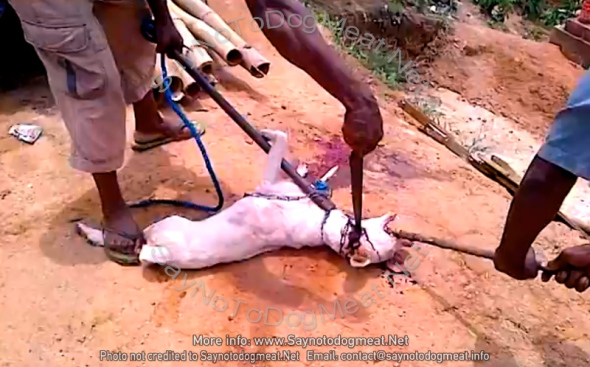
African dog butcher brutally slaughtering a dog for dog meat; the dog was in agony and fully conscious for several minutes.
Saynotodogmeat.Net Director Dr. Josa Depre advises that people refrain from eating dogs within Ebola infected zones. “Consuming dogs within an infected zone and knowing both dog can carry and show no signs is no different to playing Russian Roulette with one’s life,” says Dr. Depre.
Dogs in Africa are typically kept as pets to assist with hunting and are not “fed,” and therefore forced to scavenge food for themselves. In places like Liberia for example, dogs eat the carcass of Ebola infected animals and those same dogs are then captured by dog snatchers and sold for human consumption.
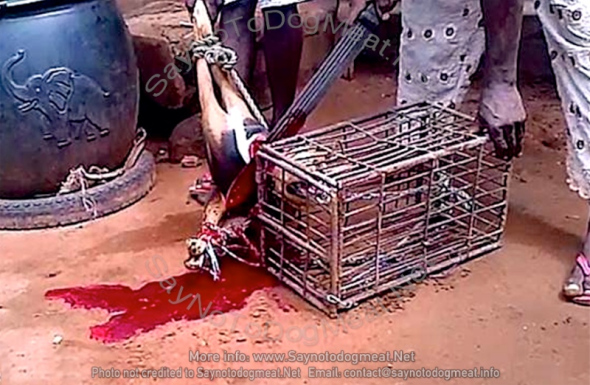
African dog butcher slowly slaughtering a dog, using a panga. Fully conscious, the dog was alive and in great agony for several minutes.
To date there have been no documented infections in felines, meaning that our domestic cats are probably safe from it.
Although dogs are susceptible to Ebola, the CDC concluded that “infected dogs are asymptomatic”, meaning that they do not develop symptoms.
During the early phase of their infection, however, they can spread the disease to humans and other animals through licking, biting, urine, and feces. However, the good news is that once the virus is cleared from the dog it is no longer contagious.”
Chop Shops In Mali
In San, Mali, there’s a restaurant in the old Bamabus terminal at the intersection turning south from the center of town. San is part of the Bobo ethnic area where dog meat is regularly served and eaten “as beef.” Restaurant reviews in Mali suggest that if you do not want to eat dog meat then you should stay away from ALL beef dishes, especially “chop shops” in certain areas, as a lot of the so-called beef is dog meat.
Guinea, which hasn’t closed any of its frontiers with six other nations, shares more than 800km of border with landlocked Mali to the east.
Ebola
Vaccines are not available until the first half of 2015, which is cold comfort for those who need vaccines immediately. Media statements such as “committed to ramping up production” by pharmaceutical companies are hollow words until the vaccines are actually produced and in use.
In America a New York doctor, Dr Craig Spencer who returned from Guinea on October 17th, has tested positive for Ebola, sparking terror amongst Americans after it was announced that the doctor had been travelling on the subway, possibly infecting other people. He is the first Ebola case diagnosed in New York, and the fourth in the US. On Tuesday he began to feel tired and developed a fever and diarrhoea on Thursday (BBC.)
The Ebola fatality rate can reach 90% - but current outbreak has mortality rate of about 70%. Incubation period is two to 21 days and there is no proven vaccine or cure. The current outbreak is the deadliest since Ebola was discovered in 1976.
An international team of scientists has been set up to determine the effectiveness of using the blood of Ebola survivors as a treatment. It is hoped the antibodies used by the immune system to fight Ebola can be transferred from a survivor to a patient.
How Not To Catch Ebola:
* Avoid direct contact with sick patients as the virus is spread through contaminated body fluids
* Wear protective cover for eyes
* Clothing and clinical waste should be incinerated and any medical equipment that needs to be kept should be decontaminated.
* People who recover from Ebola should abstain from sex or use condoms for three months
As with all the other Ebola infected areas, people in Mali are being urged to use soap when washing their hands. It is not customary to do this in Mali, but the World Health Organisation are stressing the importance of it.
All the African countries affected by Ebola are dog eating countries. There is a link between Ebola and dog meat.
DO NOT EAT DOG MEAT!
Thank you for reading,
Michele Brown.
GLOBAL MARCH
Saturday April 4th, 2015 Saynotodogmeat.Net is hosting a Global March for dogs and cats in the live meat trade. Please march with us, in your country. It will be an orderly and peaceful march but we need more ‘demonstration leaders.’ If you can help us, PLEASE EMAIL: CONTACT@SAYNOTODOGMEAT.INFO
Bring your family, children, pets and banners; we need as many people as possible, worldwide. Please mark your calendar and join our march. If you haven’t already done so, please click the box to let us know you are coming: https://www.facebook.com/events/294347744053559/
SAYNOTODOGMEAT.NEt NOW ACCEPTING DONATIONS
Saynotodogmeat.Net is now accepting donations: PLEASE MARK ALL DONATIONS “SAY NO TO DOG MEAT.NET” https://www.facebook.com/SayNoToDogMeat/app_117708921611213
No donation is too small and we are very appreciative of your help and support. Very soon we will be writing a full article outlining where donations will be used. You will receive an electronic receipt and we will too, which we will keep for historical data purposes. NO DONATION will be used to produce clothing with logos on, badges or banners. Donations are NOT for the directors. ALL MEMBERS FUND THEMSELVES.
PLEASE CONTINUE TO SIGN AND SHARE SAYNOTODOGMEAT.NET PETITIONS; WHEN COMPLETED THEY WILL BE HAND DELIVERED
PETITION FOR SOUTH KOREA
https://www.change.org/en-GB/petitions/president-geun-hye-park-take-dog-cat-meat-off-the-menu
PETITION FOR VIETNAM and THAILAND ANTI-SMUGGLING
https://www.causes.com/actions/1764795-a-petition-to-president-truong-tang-sang-moj-prime-minister-yingluck-shinawatra
PETITION FOR HEALTH MINISTER OF VIETNAM
https://www.causes.com/campaigns/71258-minister-of-public-health-thi-kim-tien
PETITION FOR NAGALAND
https://www.change.org/en-GB/petitions/additional-chief-secretary-take-dog-meat-of-nagaland-menu
PETITION TO BAN THE TRADE IN NIGERIA
https://www.change.org/en-GB/petitions/governor-of-lagos-hon-babatunde-fashola-ban-the-nigerian-dog-meat-trade-lagos
LETTER TO THE PRESIDENT OF THE PHILIPPINES
http://saynotodogmeat.net/2014/04/04/email-the-philippines-president-to-end-the-dog-meat-trade/
PLEASE SEND TO THE MUSLIM COUNCIL
http://saynotodogmeat.net/2014/01/17/open-email-to-the-muslim-council-of-great-britain/
PLEASE HELP THE PEOPLE OF TURKANA HERE
http://saynotodogmeat.net/2014/01/31/turkana-africa-emergency-aid-letter/
EMAIL THE GOVERNOR OF NIGERIA: New Address: info@nigeria.gov.ng
http://saynotodogmeat.net/2013/12/03/email-excellency-dr-honorable-alausa-excellency-honorable-babatunde-fashola/
JOIN THE WORLDWIDE GLOBAL EVENT HERE TODAY
PLEASE EMAIL US A.S.A.P FOR INFORMATION ON HOW YOU CAN HELP. SATURDAY 4TH APRIL 2015 – TIME TO MARCH FOR DOGS AND CATS IN THE MEAT TRADE.
JOIN HERE https://www.facebook.com/events/294347744053559/ SHARE EVERYWHERE WILDLY
Child Abuse?
Meet Max Arredondo pictured below he’s aged from which he shot this Zebra with quite a heavy firearm within the Eastern Cape of Southern Africa. Aged just six its quite hard to actually take on board that there are parents out there teaching their children to kill animals. Unfortunately Max Arredondo is not the only child that is being taught to kill animals on the continent of Africa. Data reviewed by International Animal Rescue Foundation Africa has revealed more and more parents are now taking their children on safaris thus teaching them to kill.
This species of Zebra is not endangered, nor threatened.
Below is a comparison showing the legal ages to hunt and own firearms to that of the legal ages to watch films, play games
Speak up for the Voiceless.org has documented quite heavily on child hunters. Our partners International Animal Rescue Foundation Africa are now lobbying the Department of Environmental Affairs - Hon Edna Molewa head minister to introduce laws that will hopefully ban children from hunting. While its quite impossible to actually ban hunting in general, it is our duty of responsibility to now call for more tougher laws that “protect both children and animals”. Protecting children from adult violent activities and protecting animals from uneducated and inexperienced hunters that can inflict more pain and suffering to an animal. While Max may be an “educated” hunter it quite concerning to know that at such a young age his brain has been exposed to such violent activities.
In reality a mother or father teaching their child to kill an animal legally or illegally with a high powered weapon is no different to that of a parent placing their child in front of a (adult rated) television program that contains swearing, death, animal killing and more. Take a look at the following video below from YouTube like many hundreds online is classed as “age-restricted based on our Community Guidelines”. Its not just YouTube either that place these restrictions of which you require a Gmail account too log into.
YouTube state;
Age-restricted content
In some cases, real, dramatized or fake violence may not be suitable for all ages. “Similar to movie or television ratings”, our age-restrictions help viewers avoid watching content that they may not feel is acceptable for themselves or for their children.
YouTube goes on to state;
What we consider to be agree restricted
- Whether the video shows scenes containing physical attacks where the injury sustained is bloody or gory.
- Whether the video shows the graphic aftermath of a violent act.
- Whether the shots of violence or gore are the focal point of the video.
- Whether the violence contained in the video is realistic when posted in a dramatic context.
In South Africa, a temporary firearms and ammunition importation permit will only be issued at the port of entry if the applicant is twenty one (21) years of age or older. Does this law apply to native citizens too? Of course it does. The minimum age for gun ownership in South Africa is 21 years, with some exceptions that may include the fact that the applicant conducts a business, is gainfully employed, a dedicated hunter, a dedicated sports person or a private collector. Max pictured above is not anywhere near the minimum - he is six however doesn’t own this rifle. Laws state that you have to be 16 or older to hunt within South Africa, in some provinces the laws state that you have to be 14 years of age. The hunt above was most likely on a farm of which “no laws apply” to this activity. Had it been in the wild the chances are father and mother would be in a spot of bother.
In South Africa film are classified by the Film and Publication Board.[74] All broadcasters, cinemas and distributors of DVD/video and computer games must comply with the following:
- A: Suitable for all.
- PG: Parental Guidance
- 7–9PG: Not suitable for children under the age of 7. Children aged 7–9 years old may not be admitted unless accompanied by an adult.
- 10: Not suitable for children under the age of 10.
- 10–12PG: Not suitable for children under the age of 10. Children aged 10–12 years old may not be admitted unless accompanied by an adult.
- 13: Not suitable for children under the age of 13.
- 16: Not suitable for persons under the age of 16.
- 18: Not suitable for persons under the age of 18.
- X18: No One Under 18 Admitted; restricted to licensed adult premises.
- XX: Must not be distributed or exhibited in public.
Films that contain violence, death or “adult” content under South African law with regards to (PG) - 7–9PG: Not suitable for children under the age of 7. Children aged 7–9 years old may not be admitted unless accompanied by an adult.
As one can clearly see laws within South Africa are somewhat odd. Its “just reasonably” OK-ish to place a firearm within your child’s hands at the age of six and allow him or her to hunt an animal of which this is classified as “a violent and abusive act” but not reasonable to allow your child to view a “violent act[s] or abuse[s]” under the age of seven. Max in this case is 6. How does a violent video or game differ from that of a child taking a shot at a Zebra? It doesn’t of which this is in all due respects child abuse.
Exposing Children to Violence or Violent Acts
FACT - In 2011, nearly 60 percent of children (ages 17 and younger) were exposed to violence within the past year, either directly (as victims) or indirectly (as witnesses). Detailed documentation related mainly to domestic abuse, bullying, murder, animal abuse, rape, other. Regardless of what the type abuse children were exposed too, abuse is abuse no matter how much you try to sugar coat it, make it sound legal or necessary. Placing a gun in a the hands of a child at the age of six while the brain is still developing from 0-21 years of age is “exposing a vulnerable person” to abuse that can later on enact these same type of abuses out from which they see as “normal practice”.
Children are more likely to be exposed to violence and crime than adults are. An experience of violence can lead to lasting physical, mental, and emotional harm, whether the child is a direct victim or a witness. Children who are exposed to violence are more likely to suffer from attachment problems, regressive behavior, anxiety, and depression, and to have aggression and conduct problems. Other health-related problems, as well as academic and cognitive problems, delinquency, and involvement in the child welfare and juvenile justice systems, are also associated with experiences of violence. Even community violence that children do not directly witness has been shown to affect negatively children’s attentional abilities and cognitive performance.
One mechanism through which early, chronic exposure to violence affects children is by disrupting the developing brain. Specific brain structures (amygdala, hippocampus, prefrontal cortex) are adversely affected by stress. Executive functions (such as planning, memory, focusing attention, impulse control, and using new information to make decisions) can become impaired. Moreover, children who have had chronic exposure to real or perceived threats may become conditioned to react with fear and anxiety to a broad range of circumstances. Their diminished capacity to differentiate between genuine threats and objectively safe or neutral situations can impair their ability to learn and interact with others, and may lead to serious anxiety disorders. Unfortunately, while fear learning happens early in life, with emotional memories that are powerful and persistent, unlearning fears depends upon brain maturation that happens only later, and requires active work and evidence-based treatment.
Children exposed to violence are more likely than those not experiencing violence to become victims or perpetrators of further violence.
In conclusion exposing children to violence does impair their own understanding of violence in itself. If a child has been taught a violent act and is educated on inflicting violence then what’s to say that child will not then inflict that violence onto another person or animal. We see this form of child abuse as one of the worst simply because the child has been in one way or the other “educated”. They know how to use a rifle, their fear of death and wrongdoings is decreased, empathy and care although still present is somewhat pushed aside. A child not exposed to violence but love will show more compassion and emotion at seeing a dead, injured of suffering being than that of a child exposed and educated of violence acts. The video below depicts how Green Mile Safari had their hunting licences revoked after many breaches of hunting activities. Children hunting, running over dead animals in cars, hunting animals from a moving vehicle and more. Believe it or not there are many more cases such as these on South African farms from which many tourists and their families visit.
Thank you for reading. To stay up to date on African wildlife affairs please visit our Facebook page here.
You can also sign petitions below.
https://www.causes.com/campaigns/34435-stop-any-kind-of-safari-hunting-in-africa
http://www.change.org/p/stop-canned-hunting-in-south-africa
https://www.change.org/p/hon-gianni-pittella-ban-lion-and-rhino-trophies-into-the-european-union

